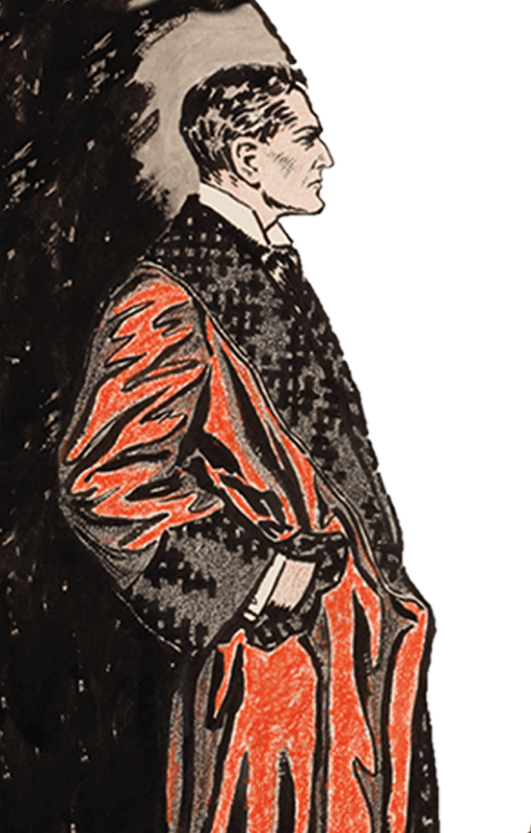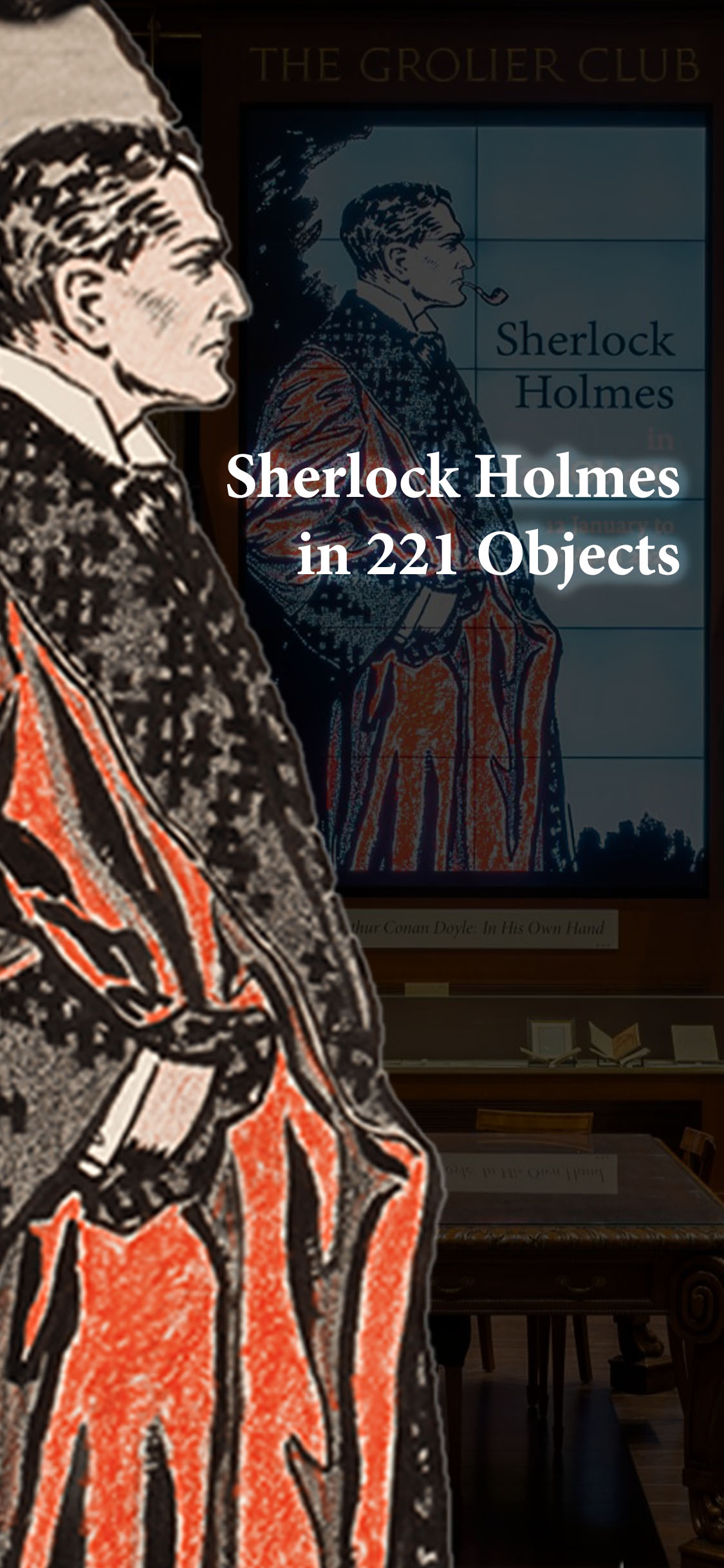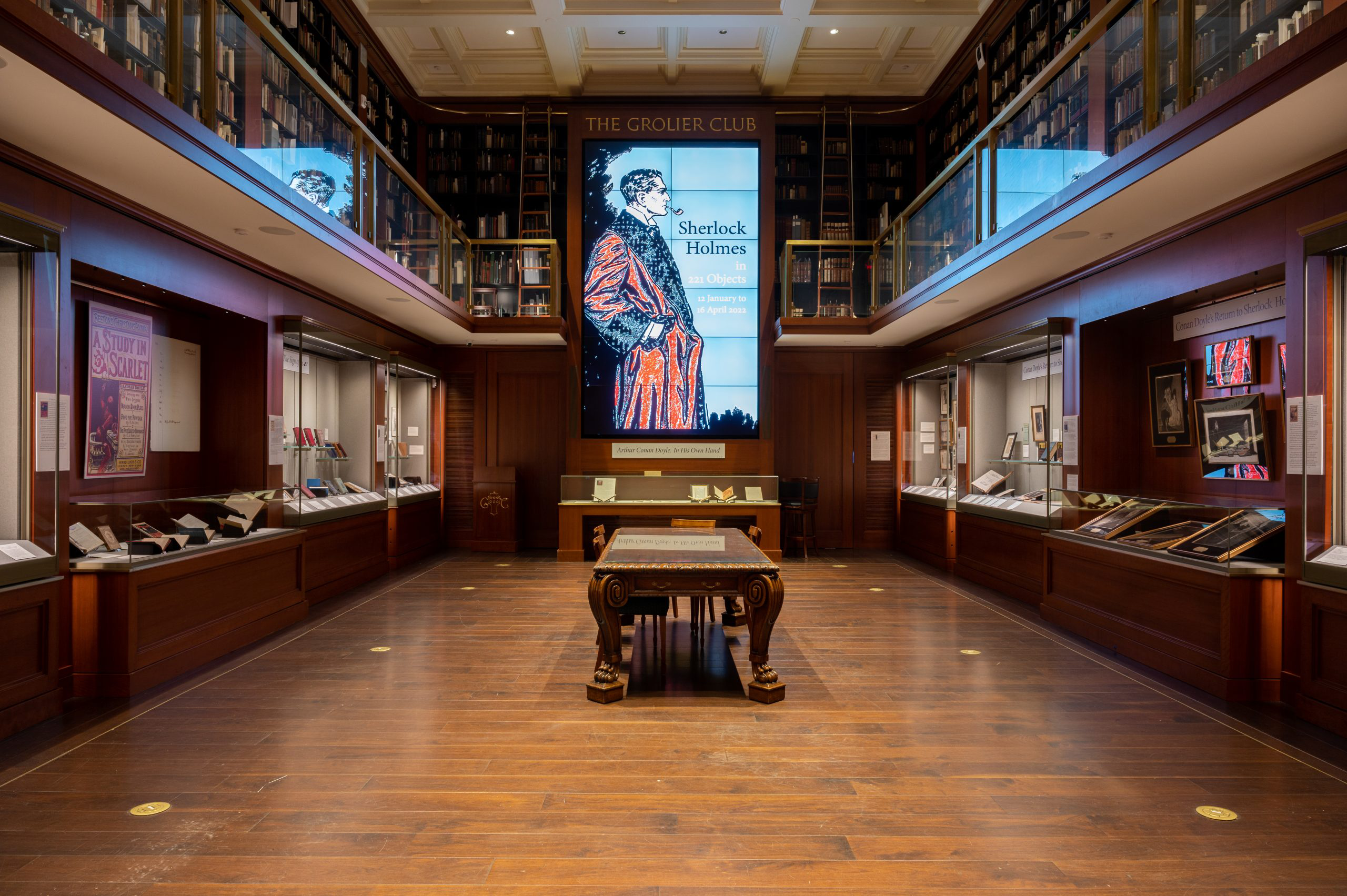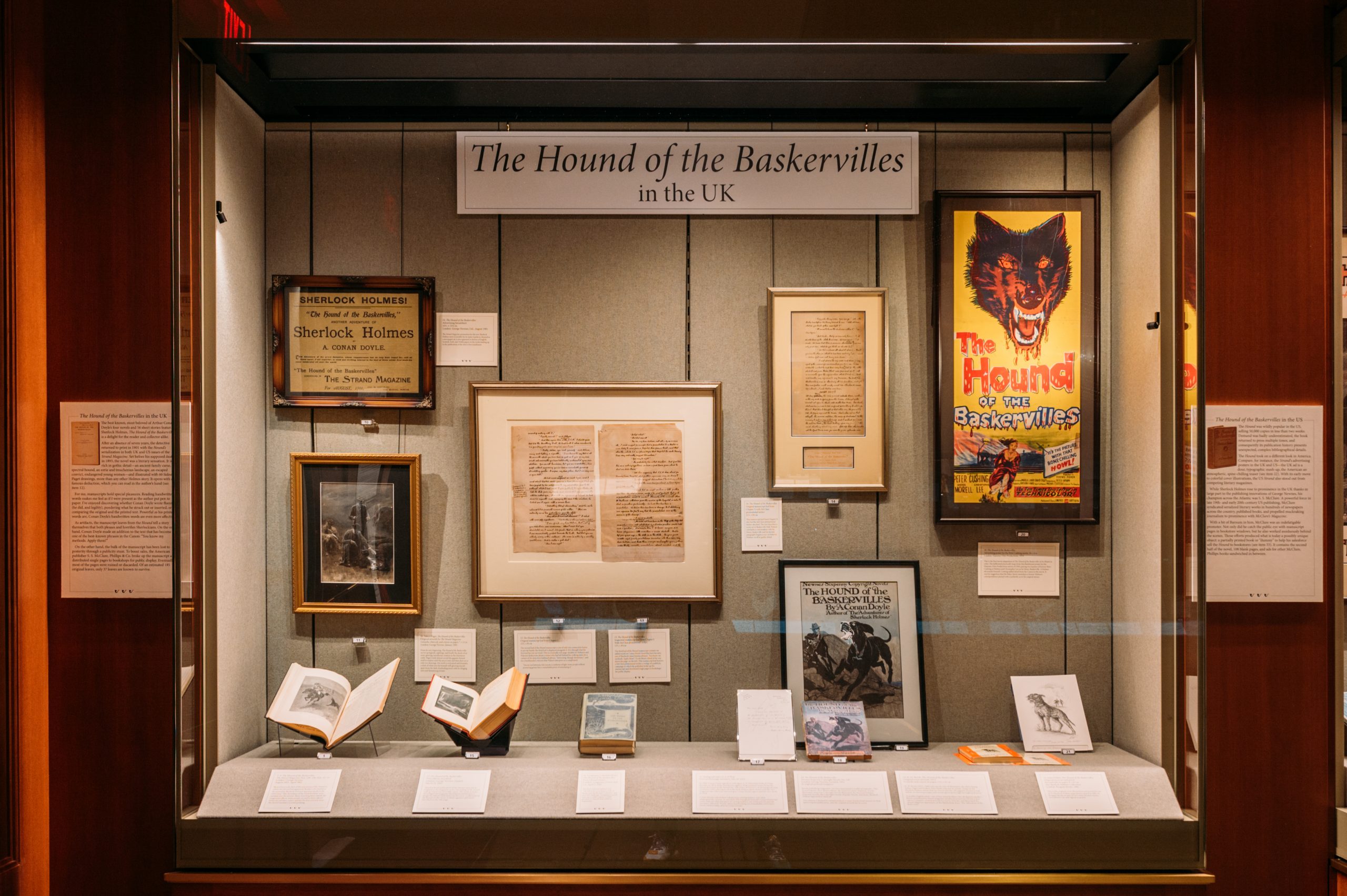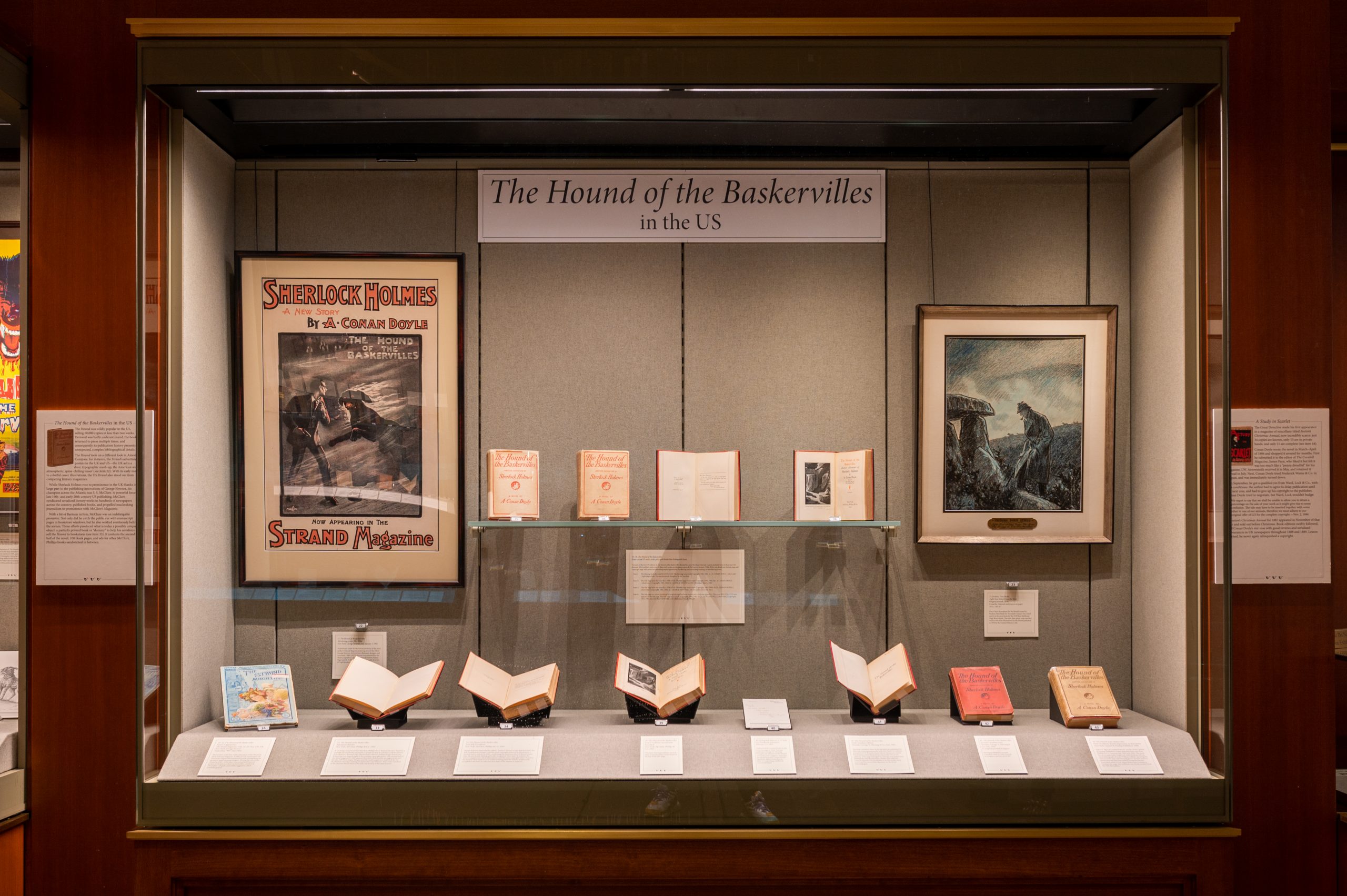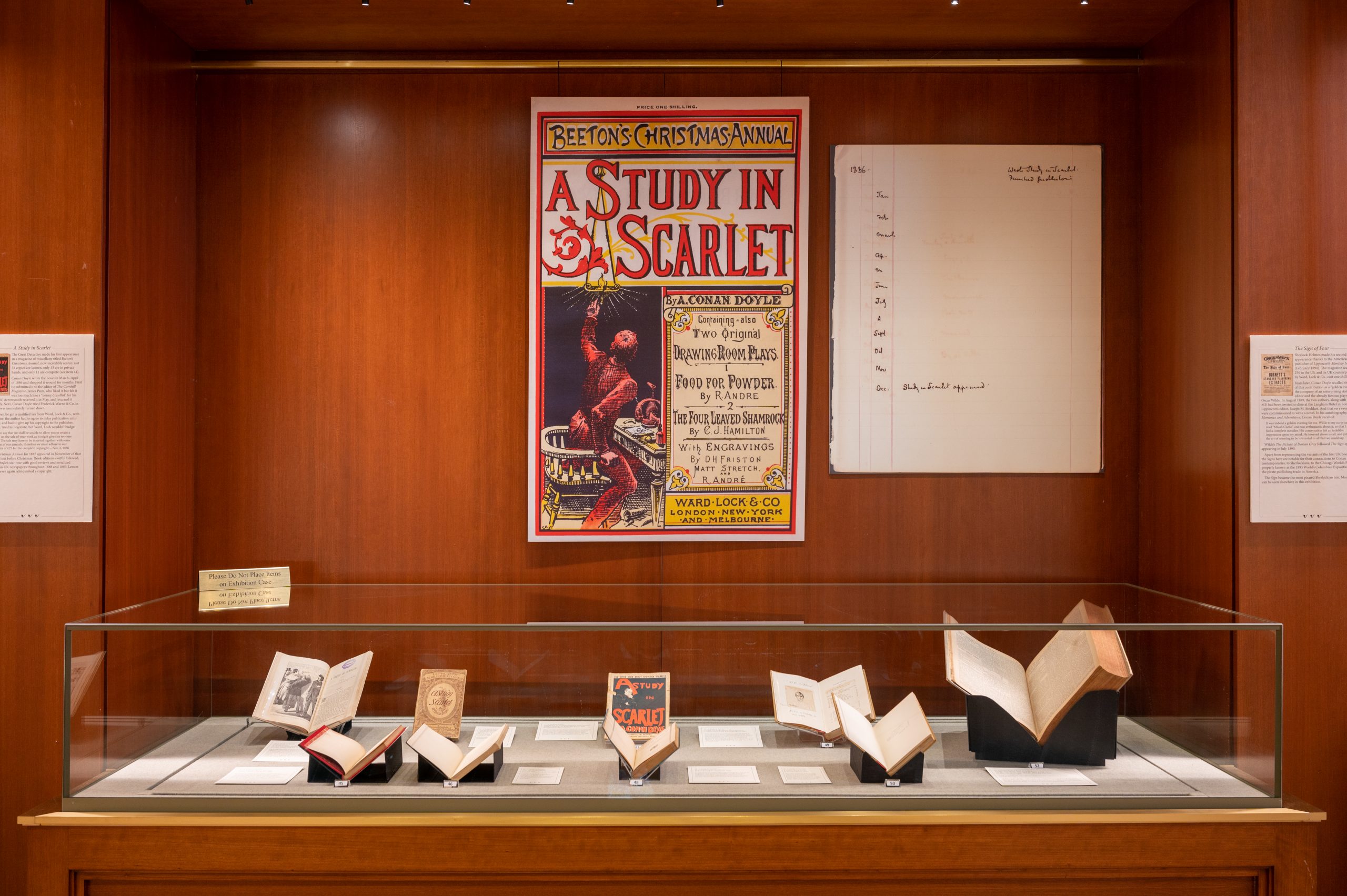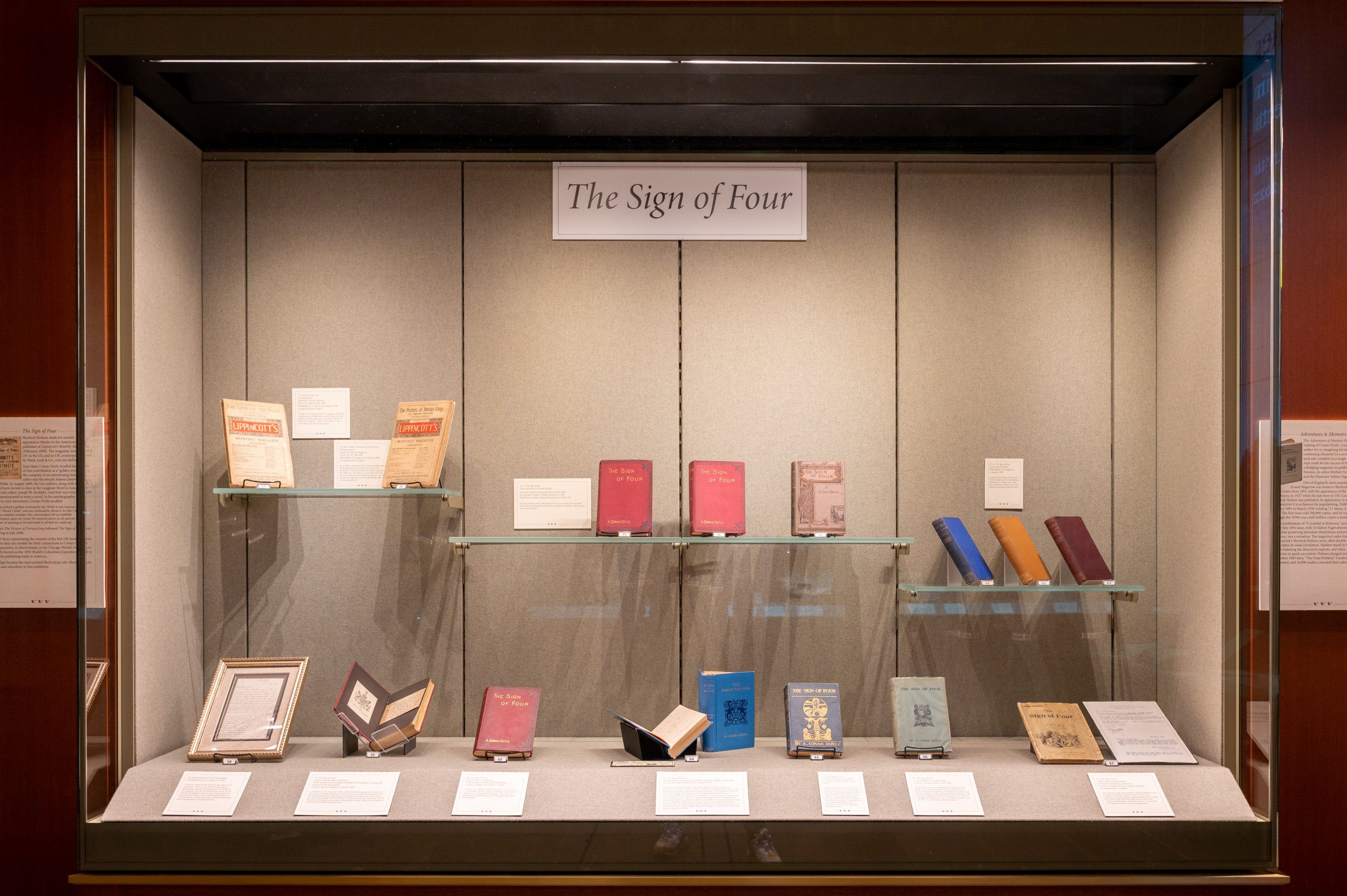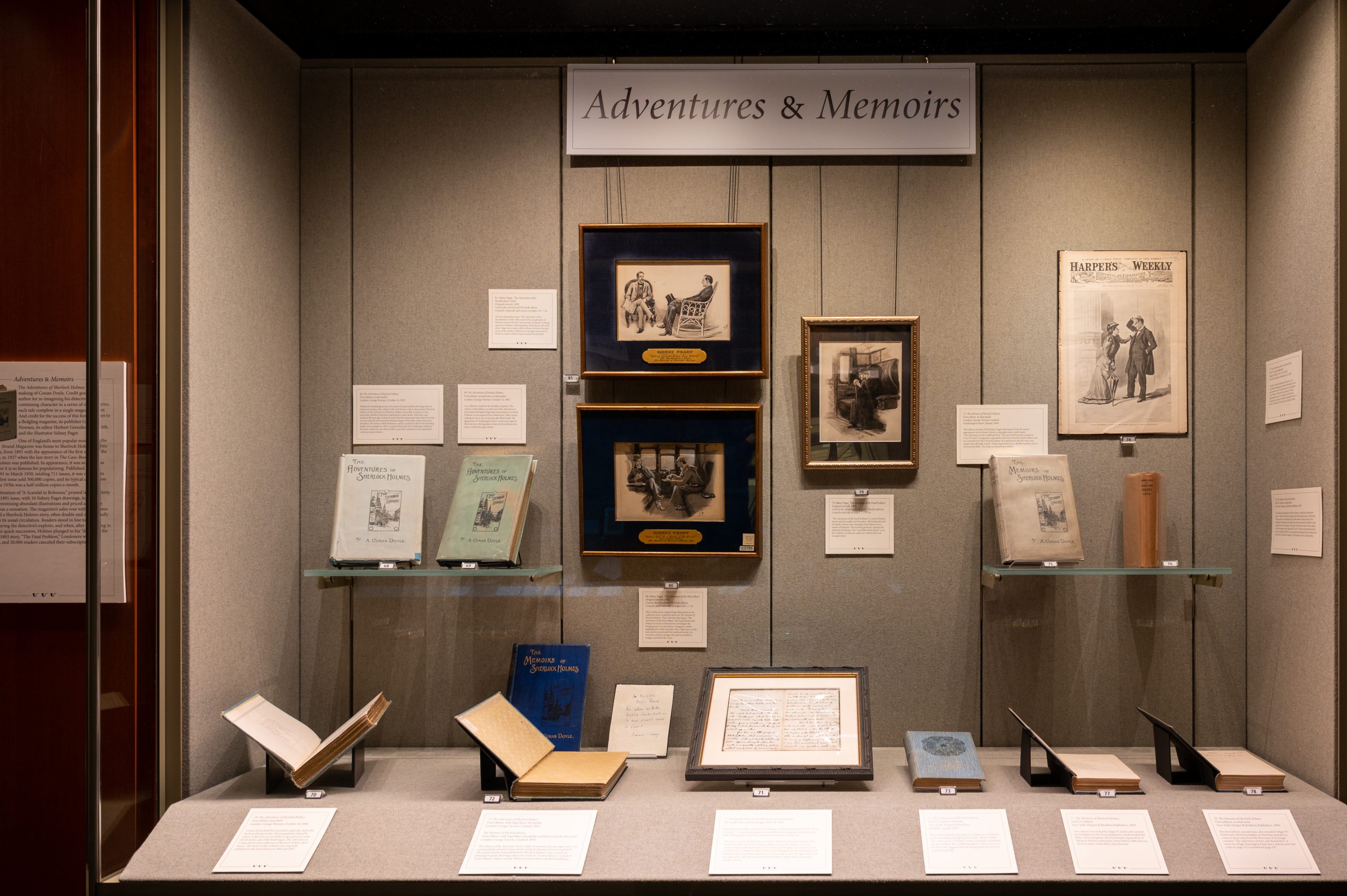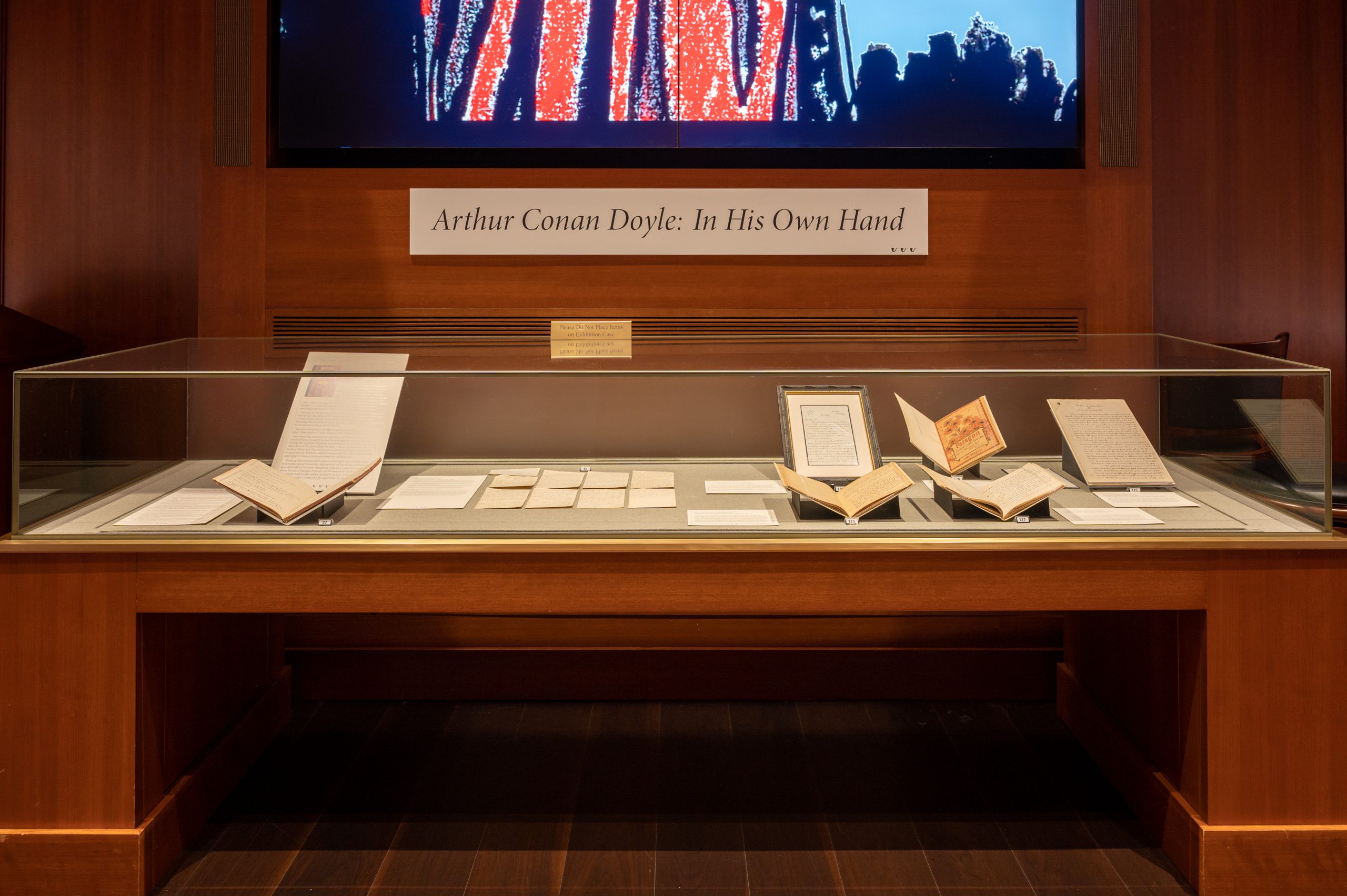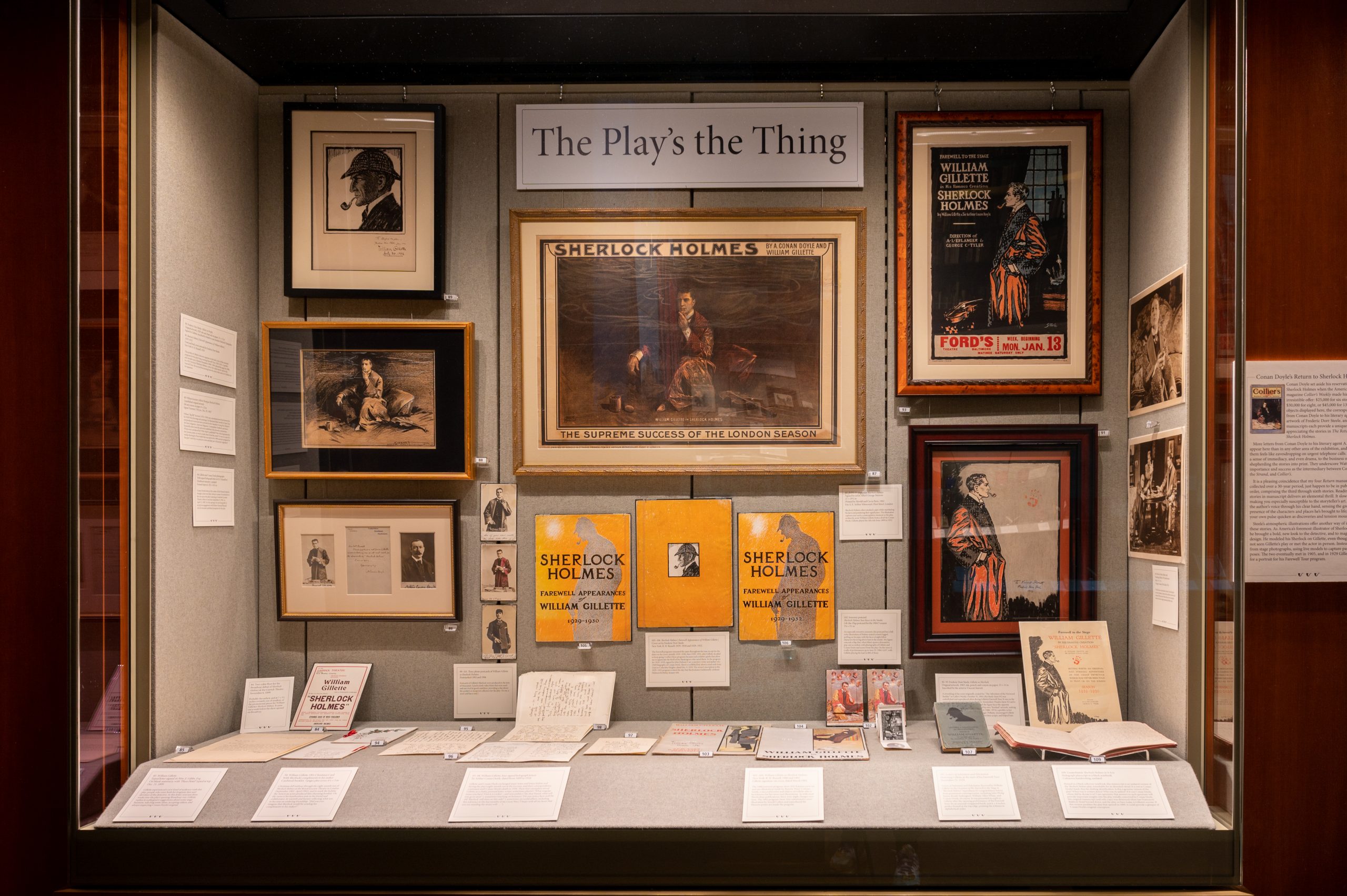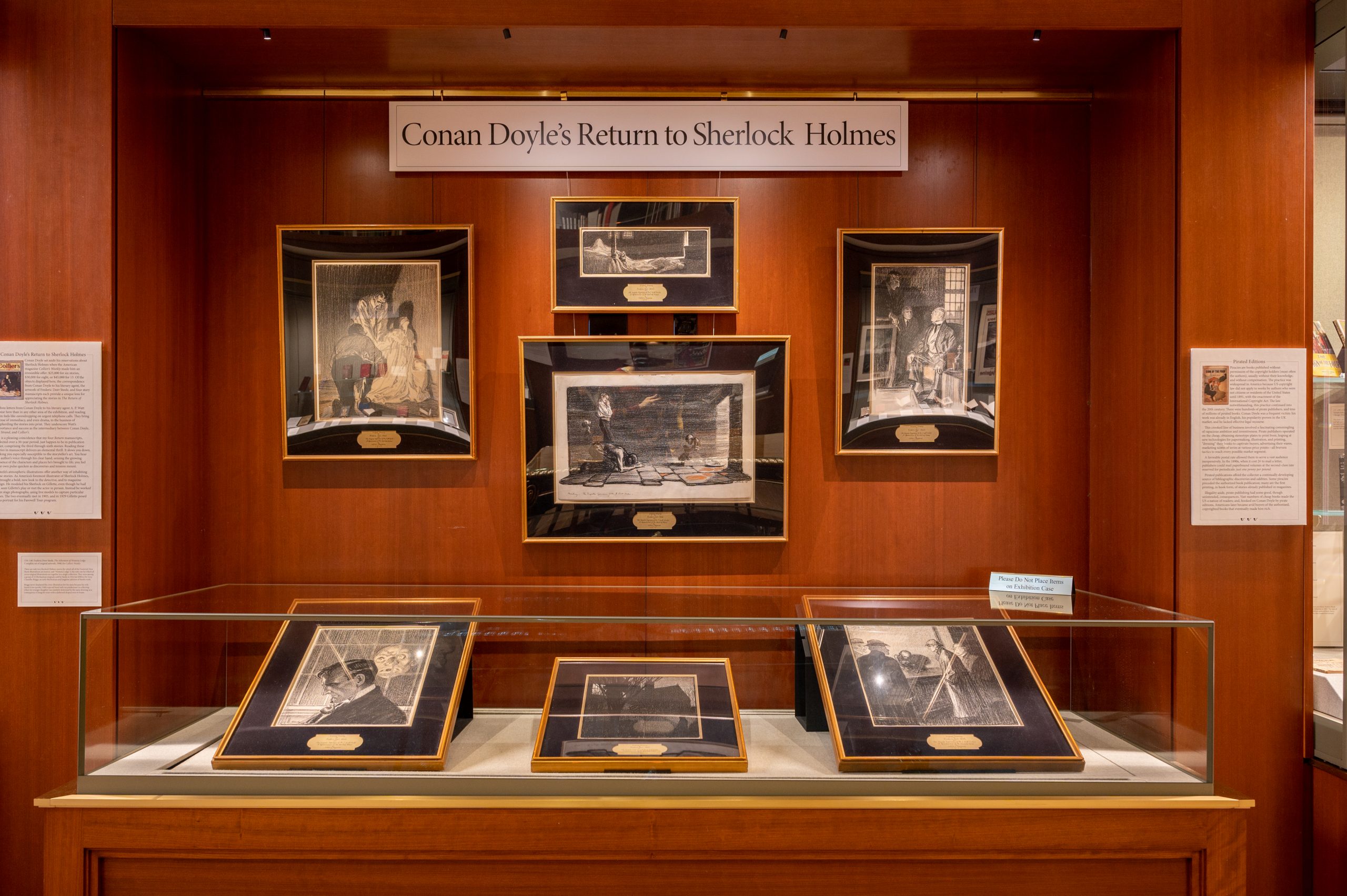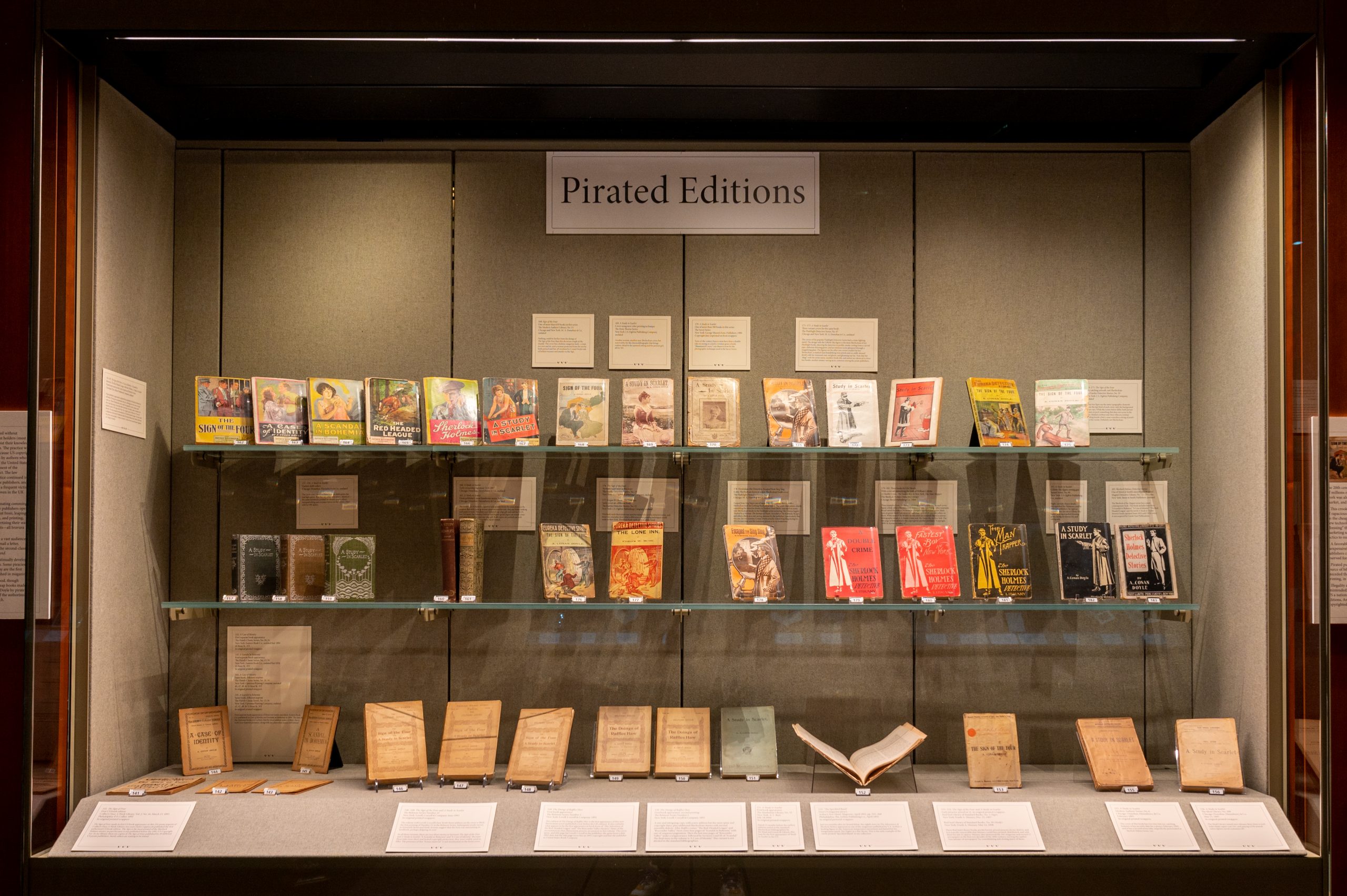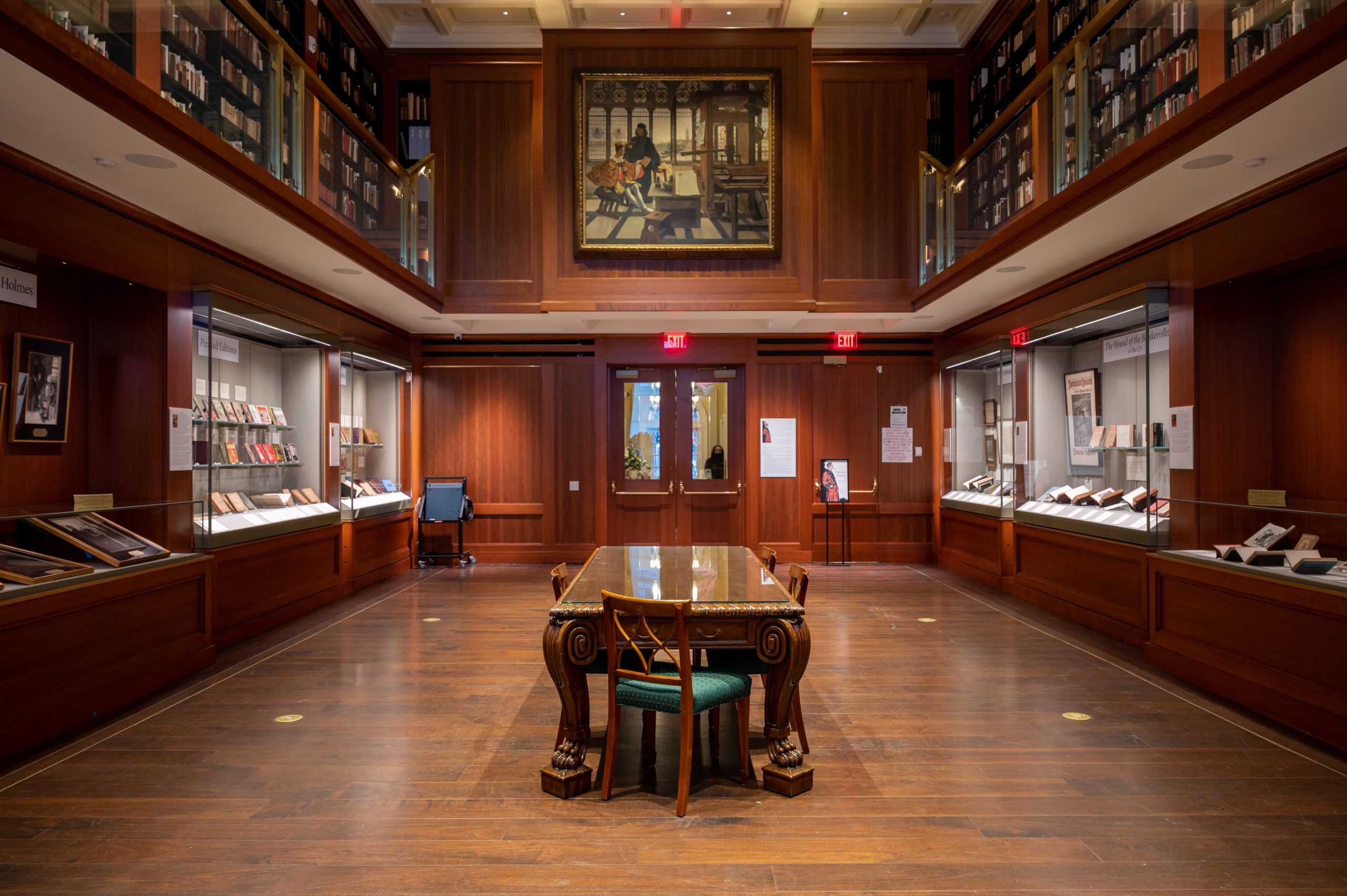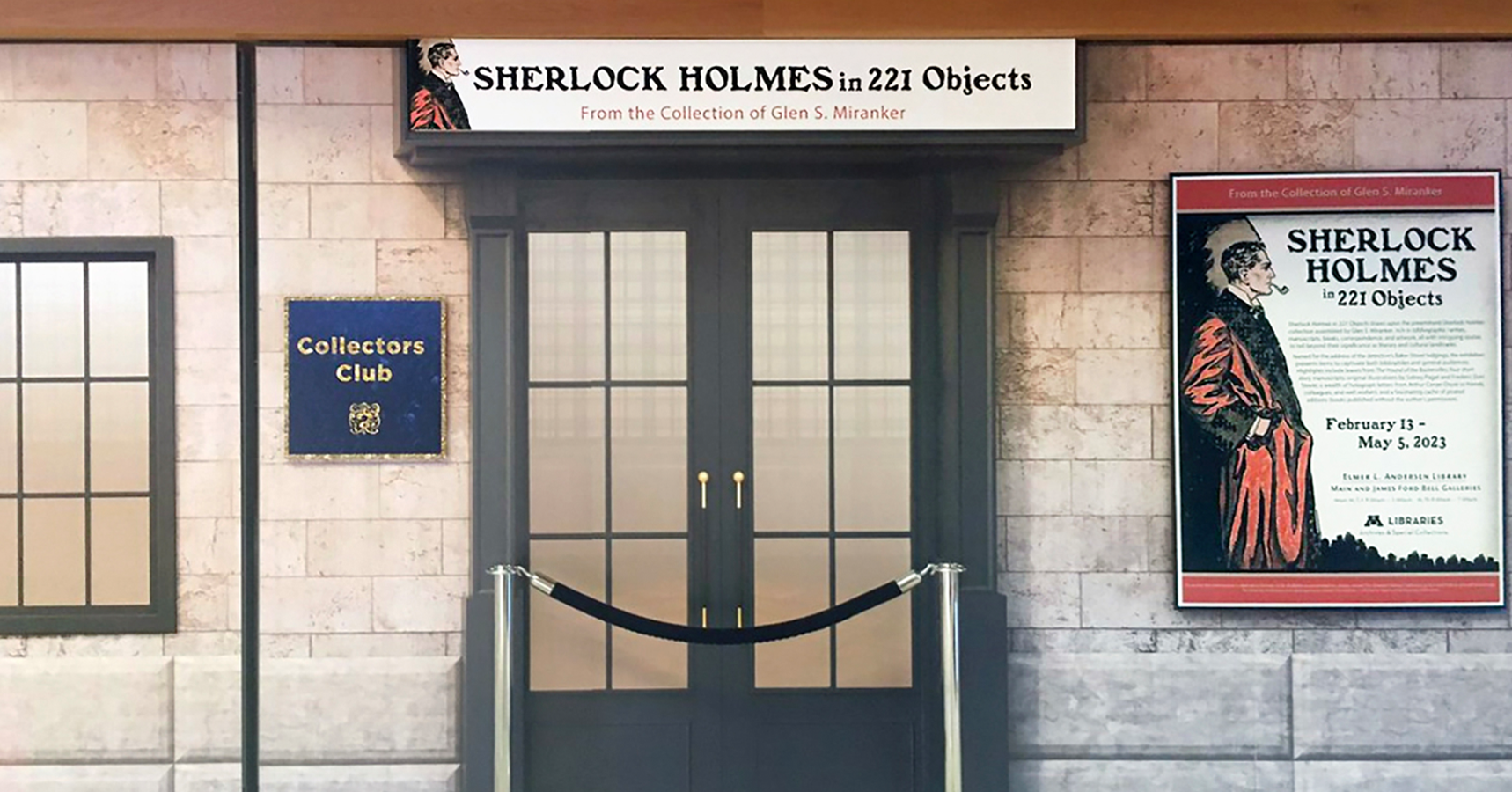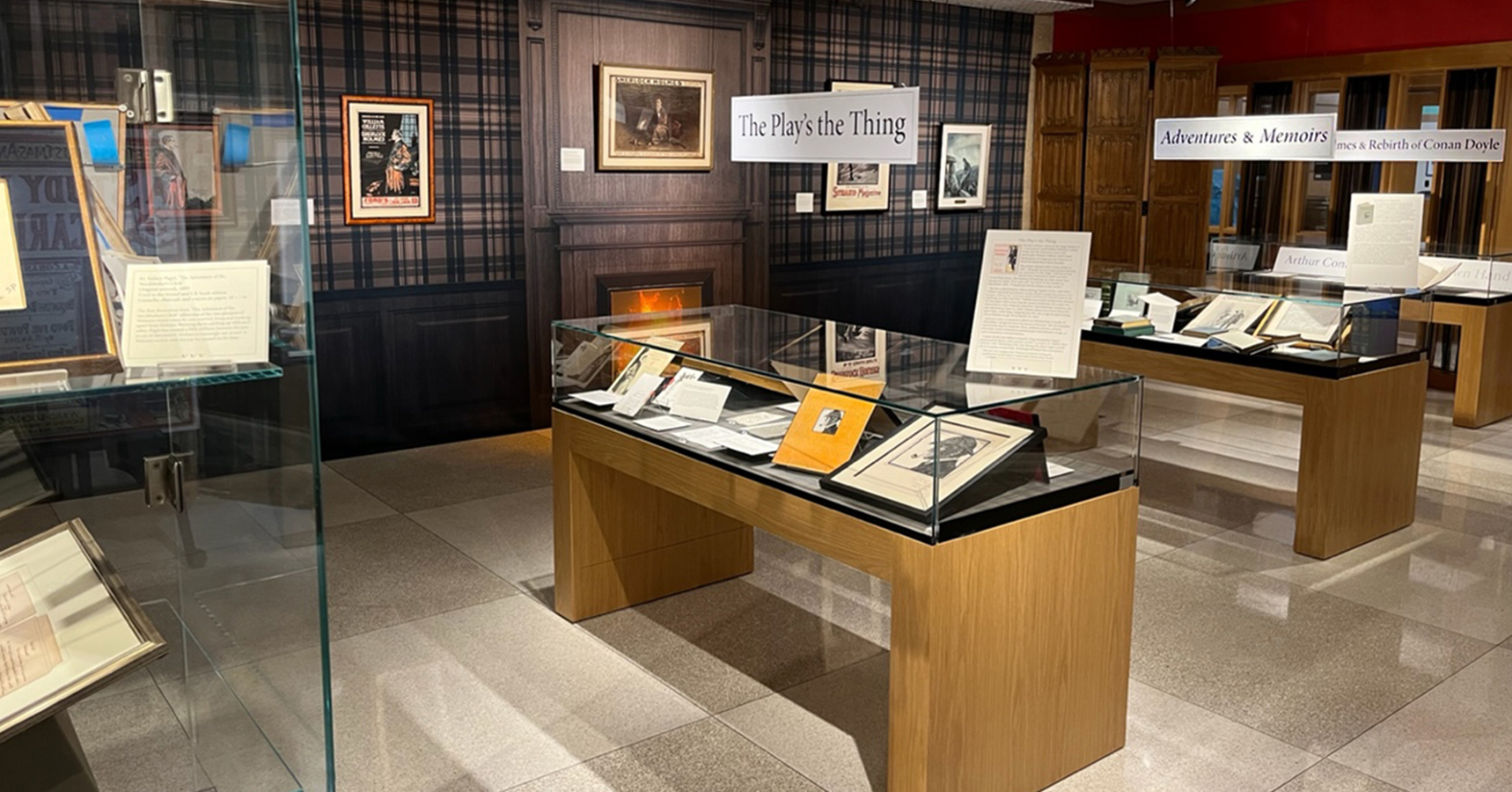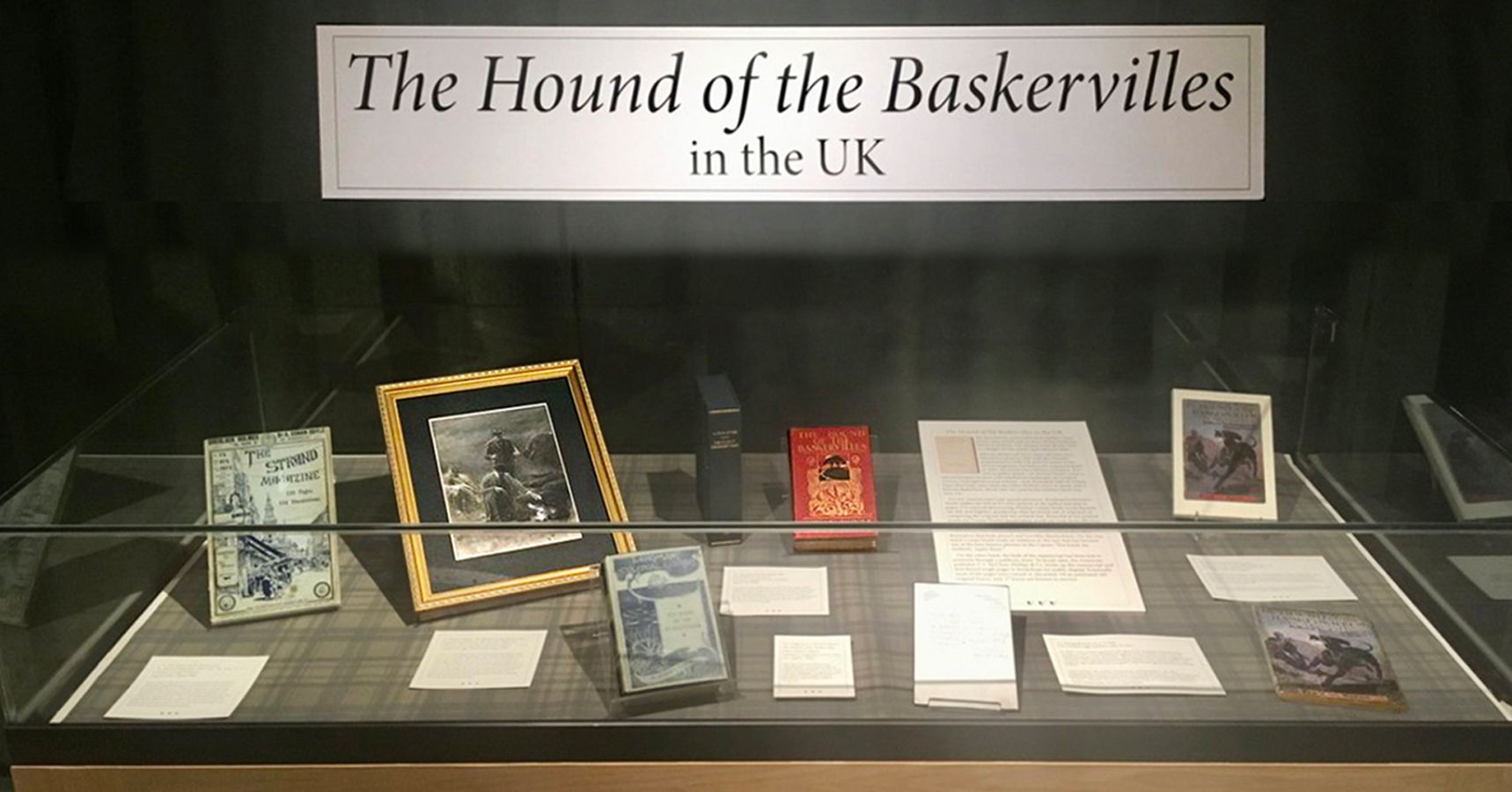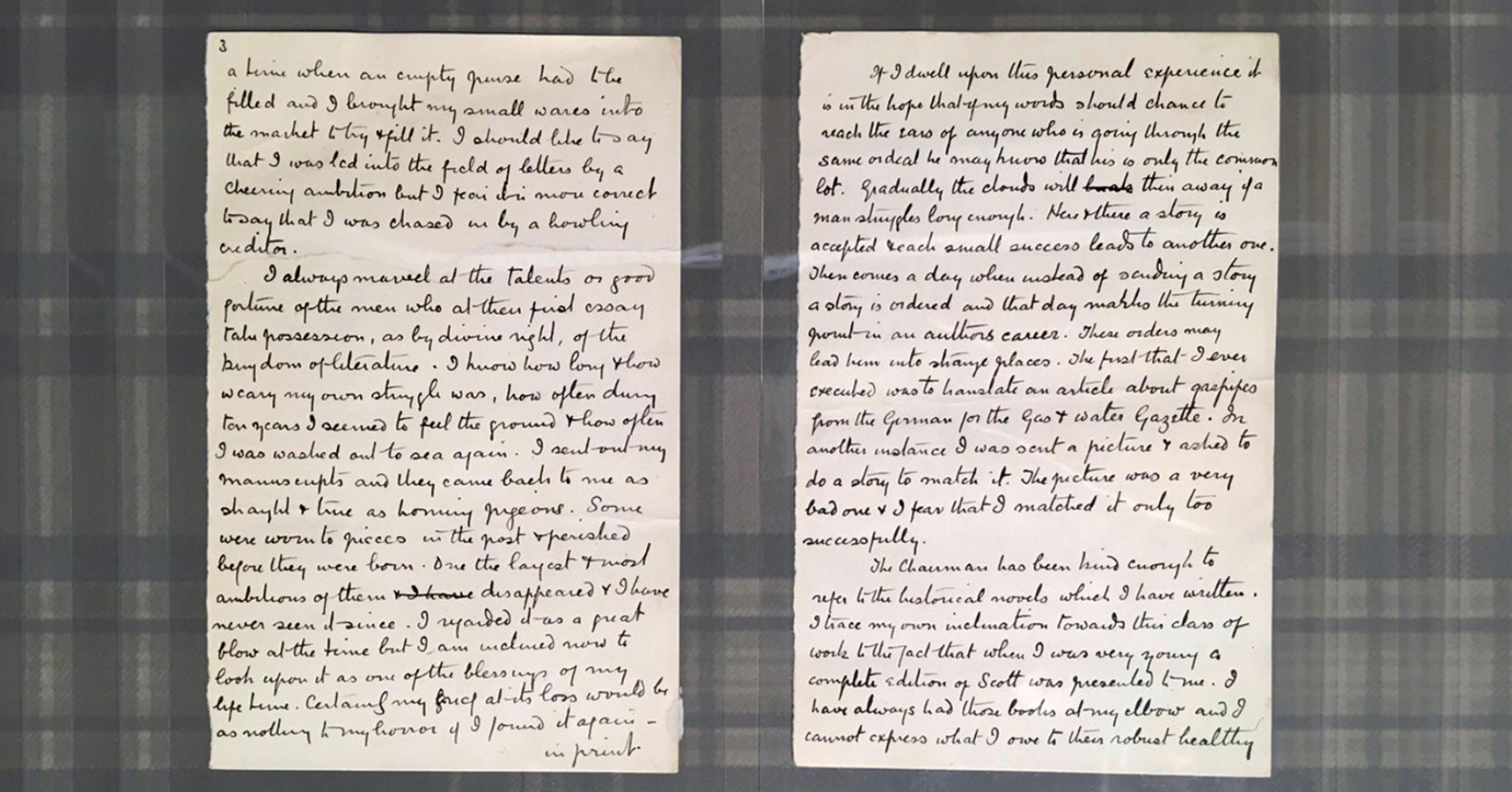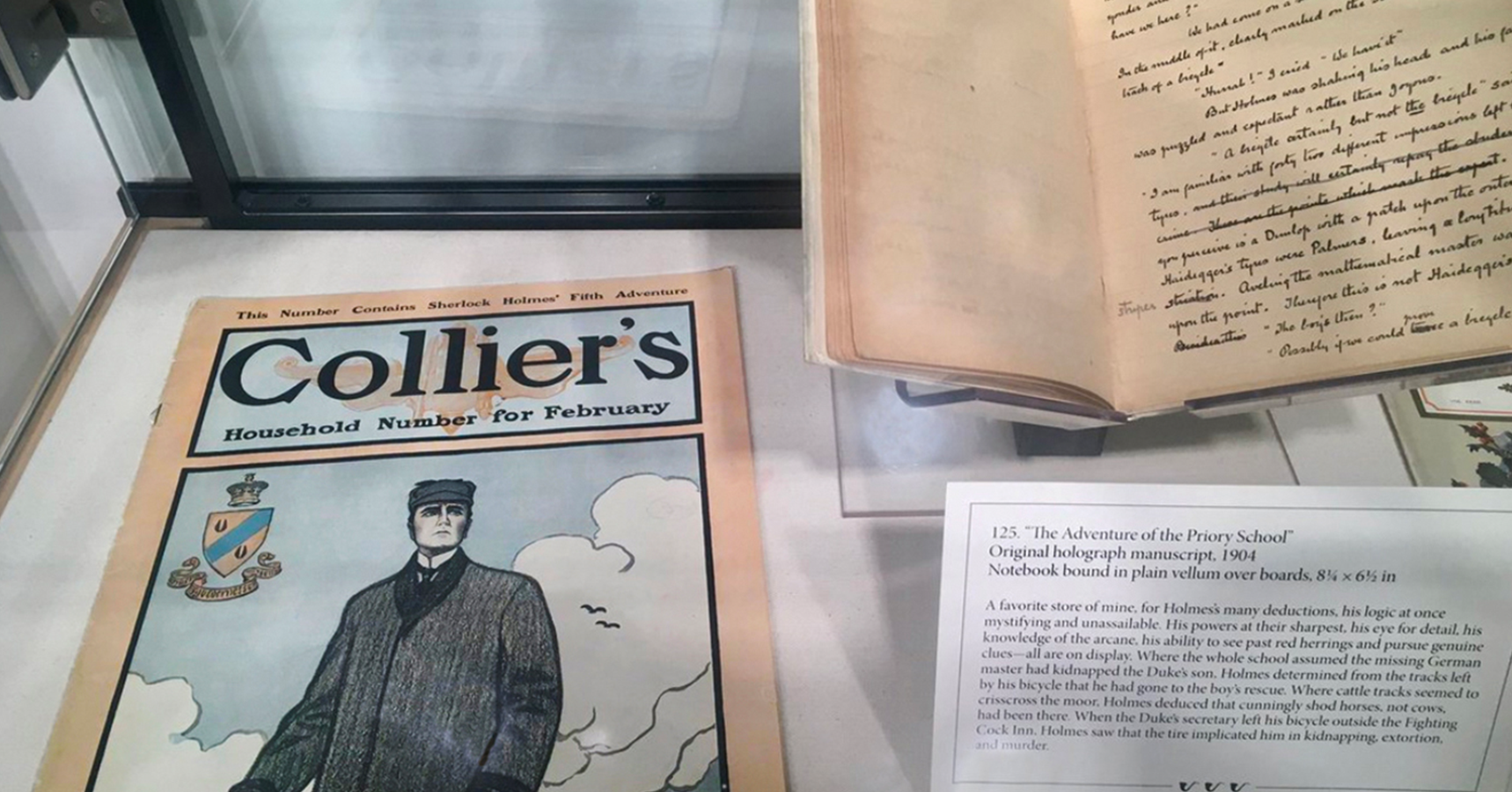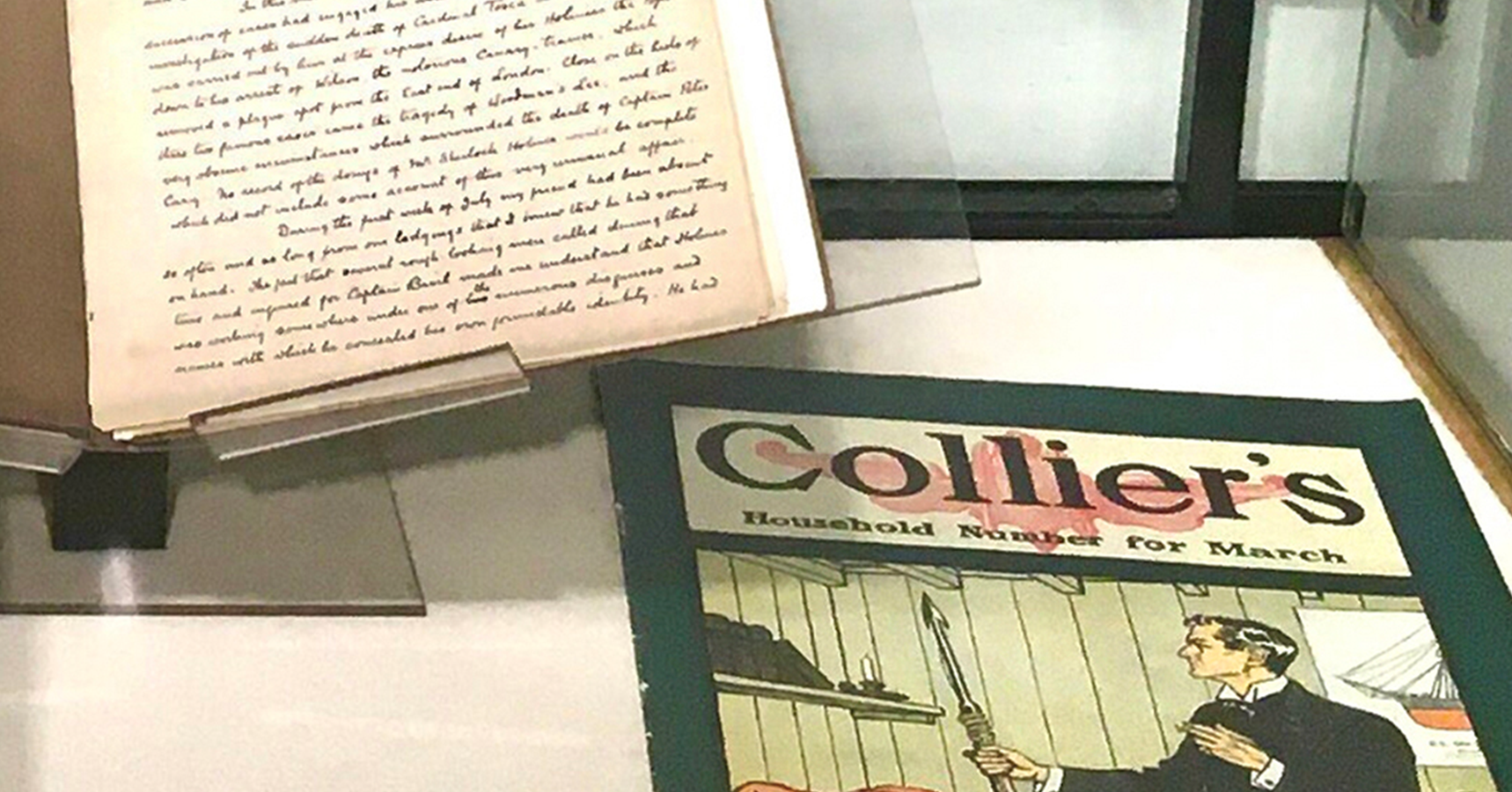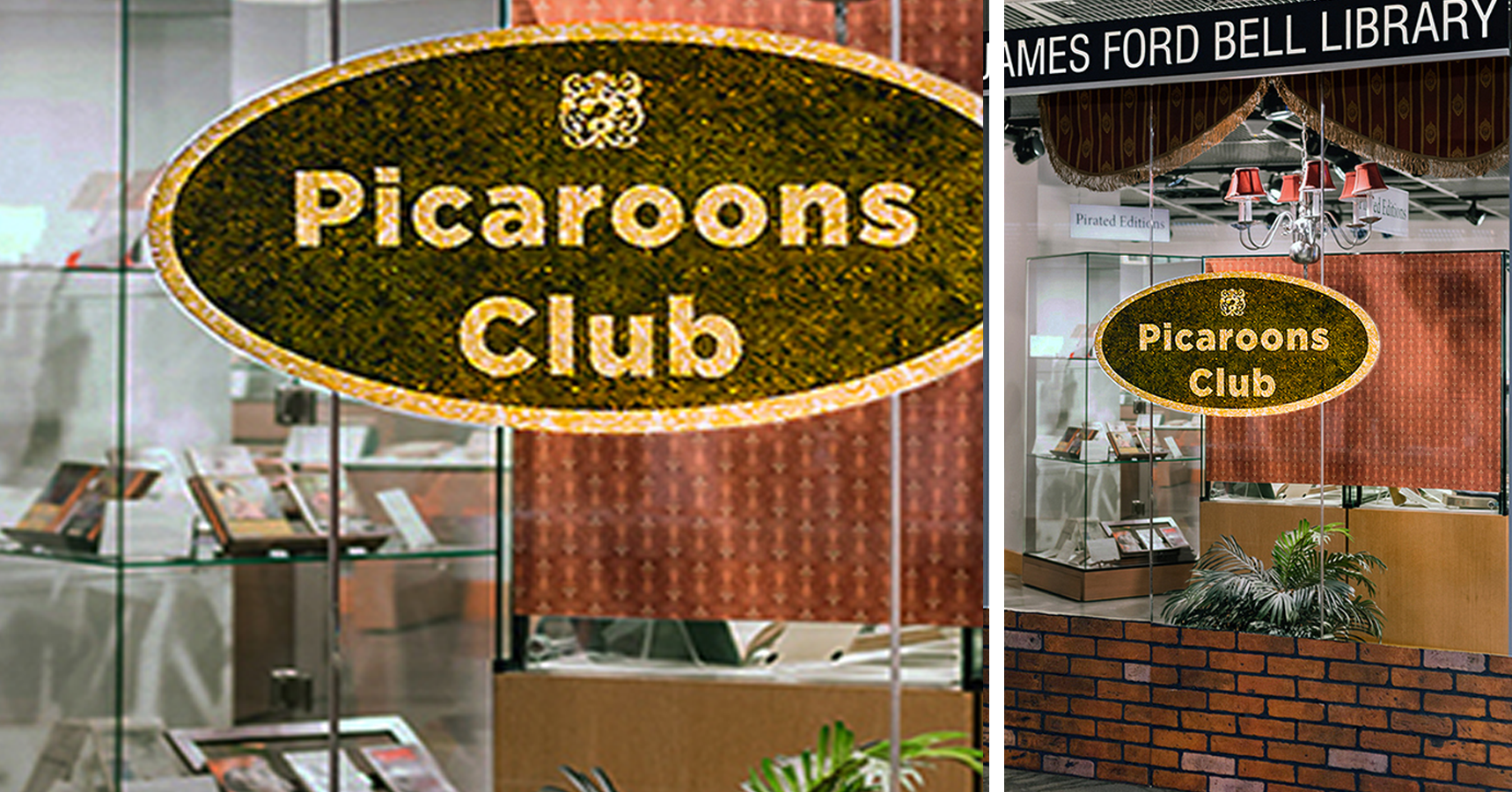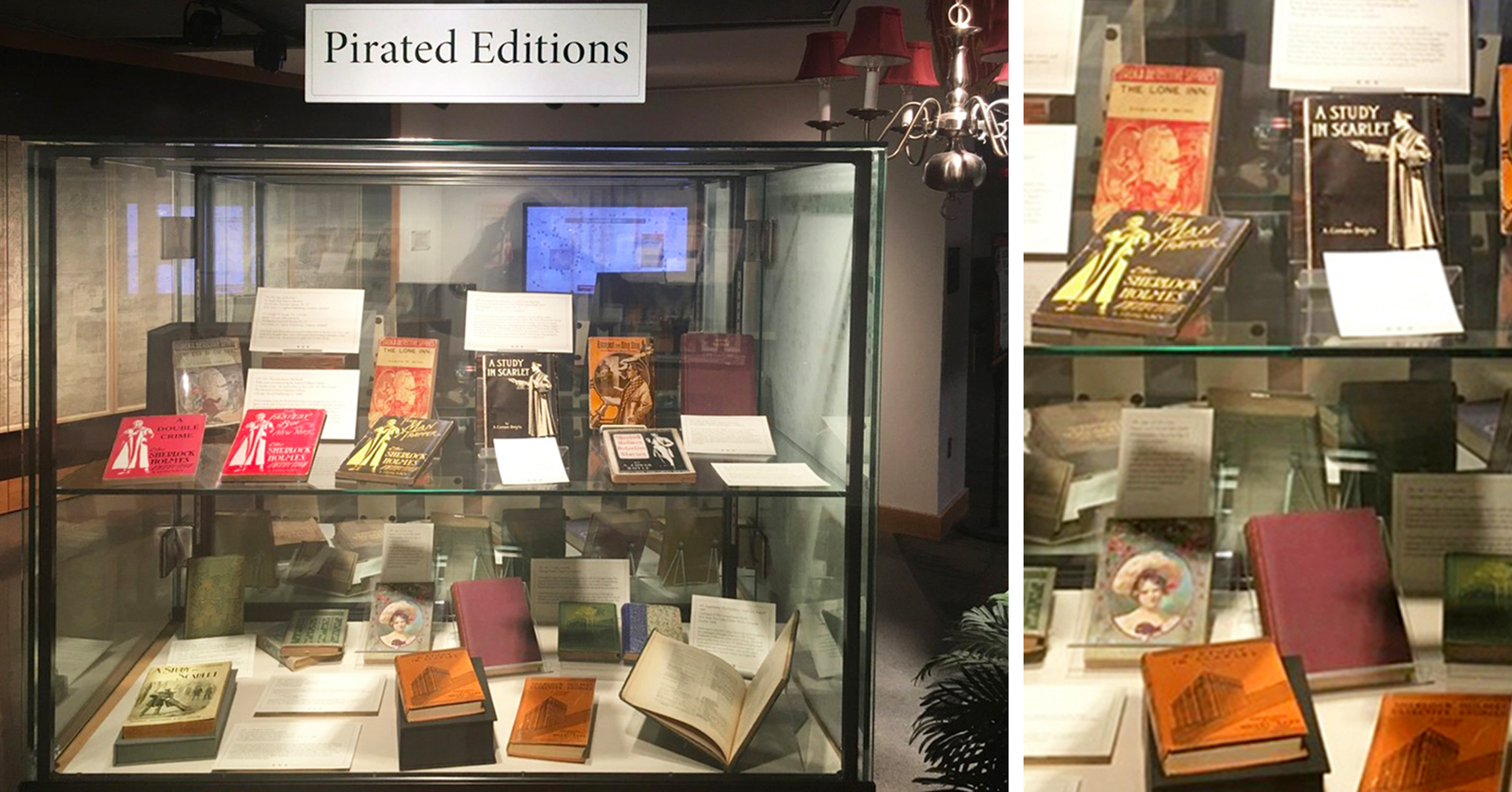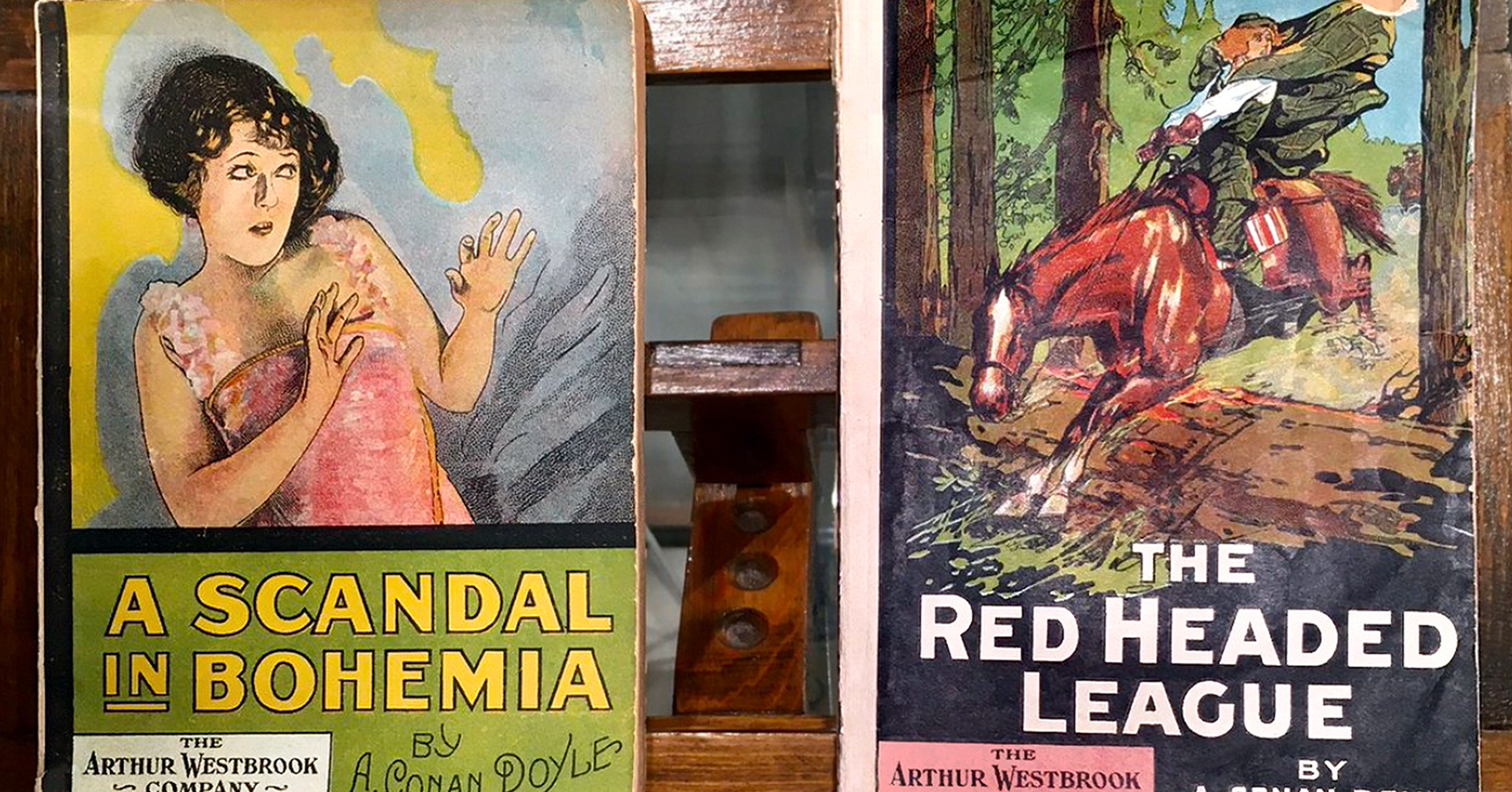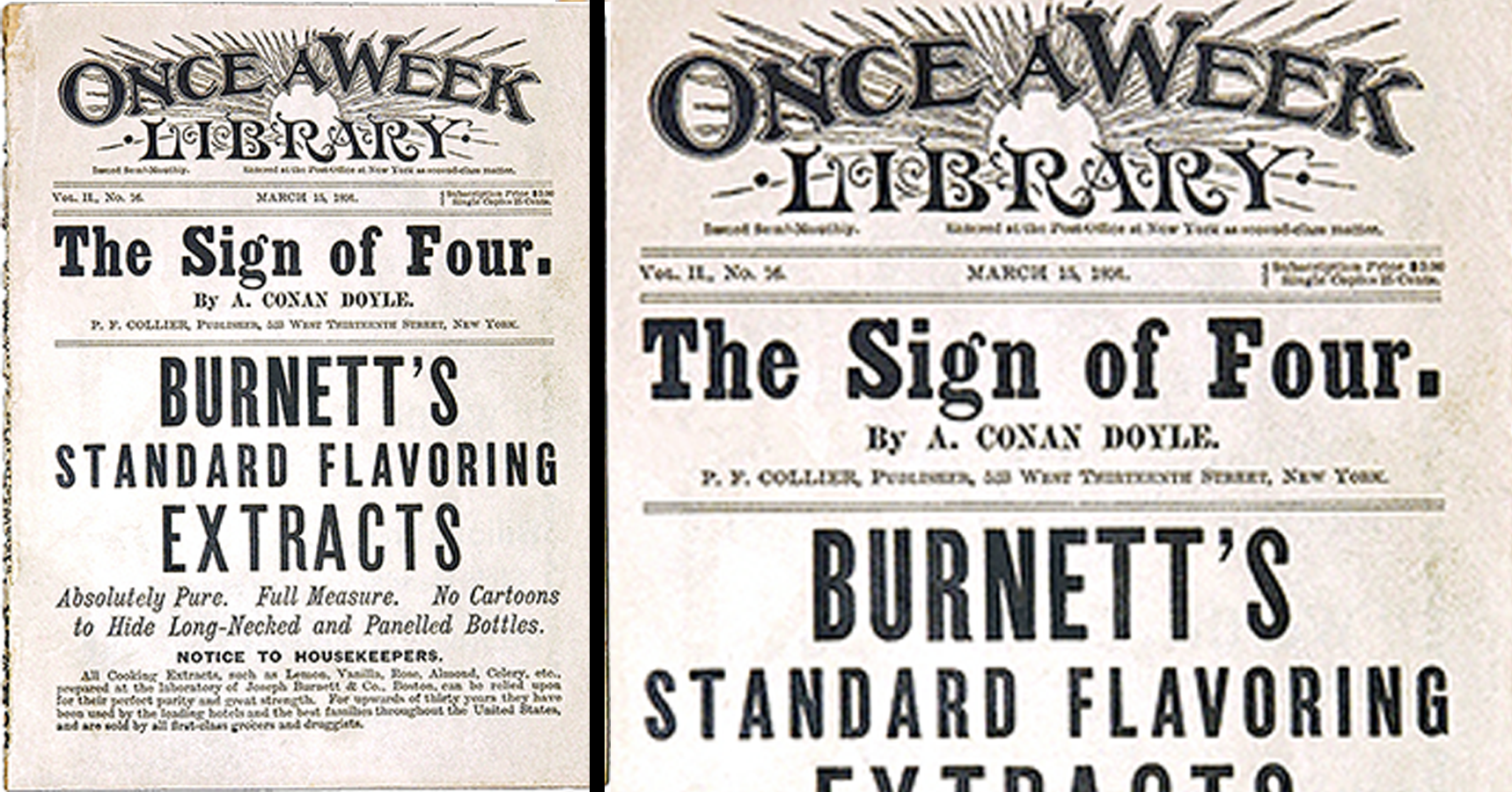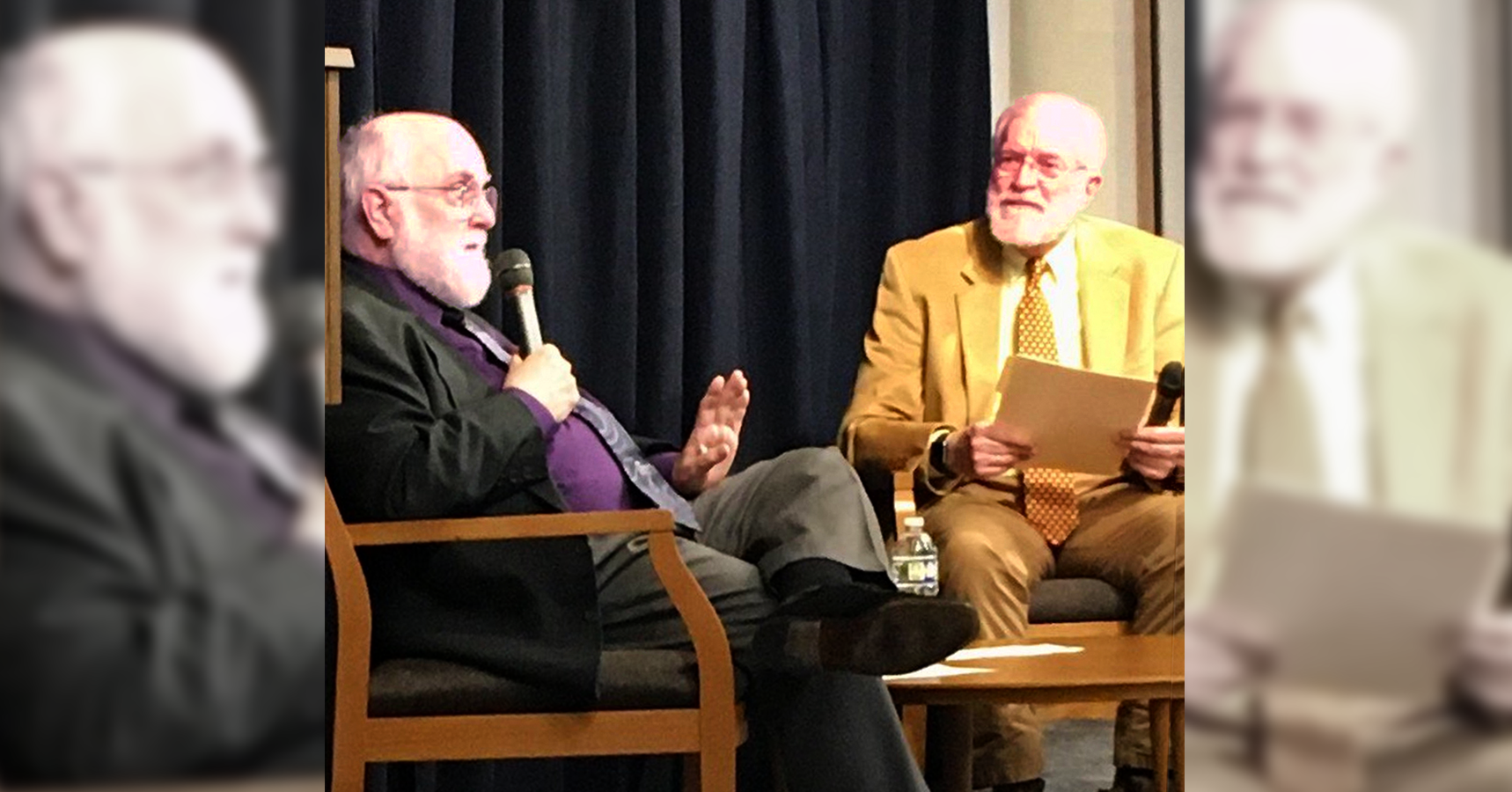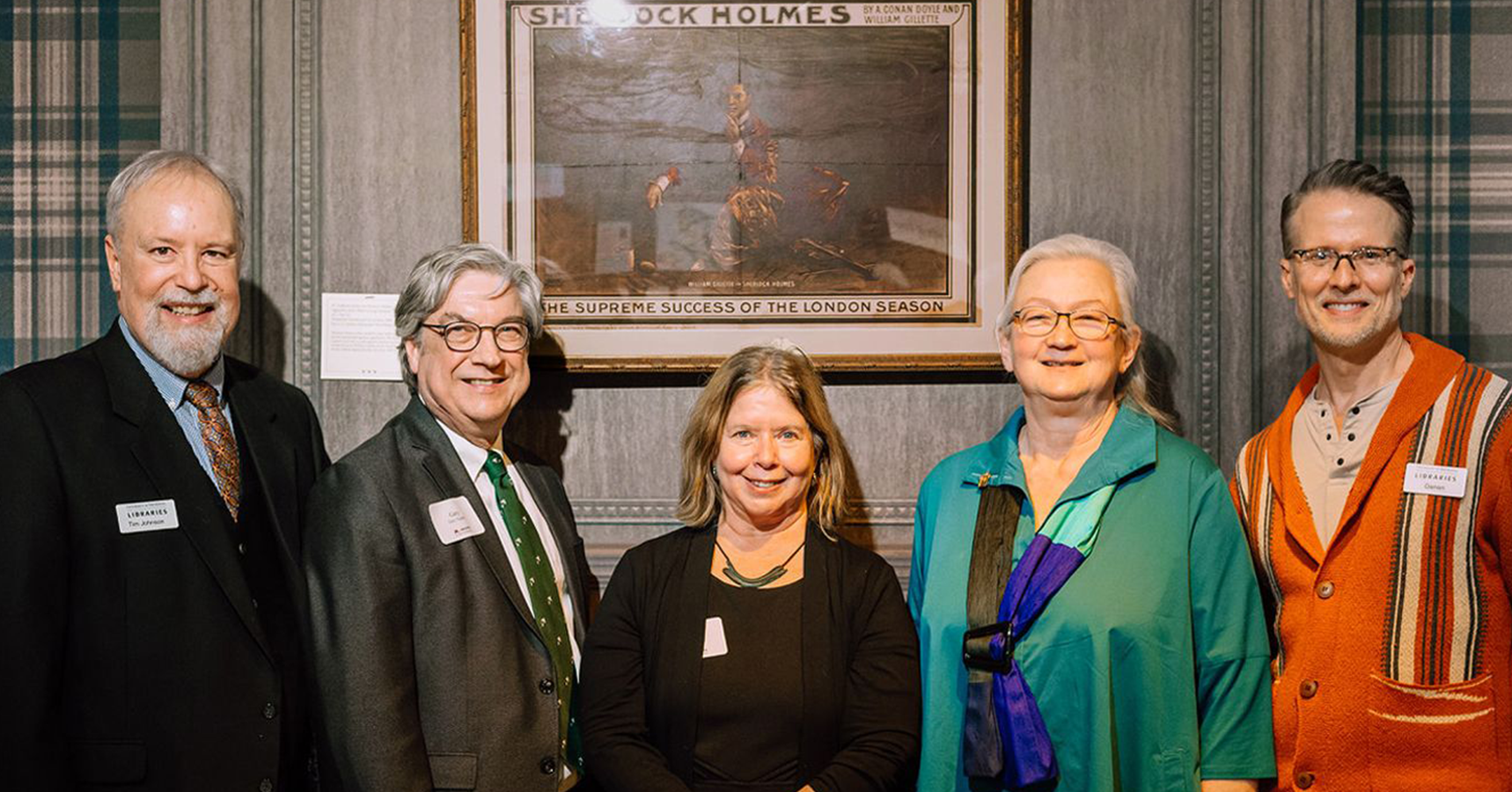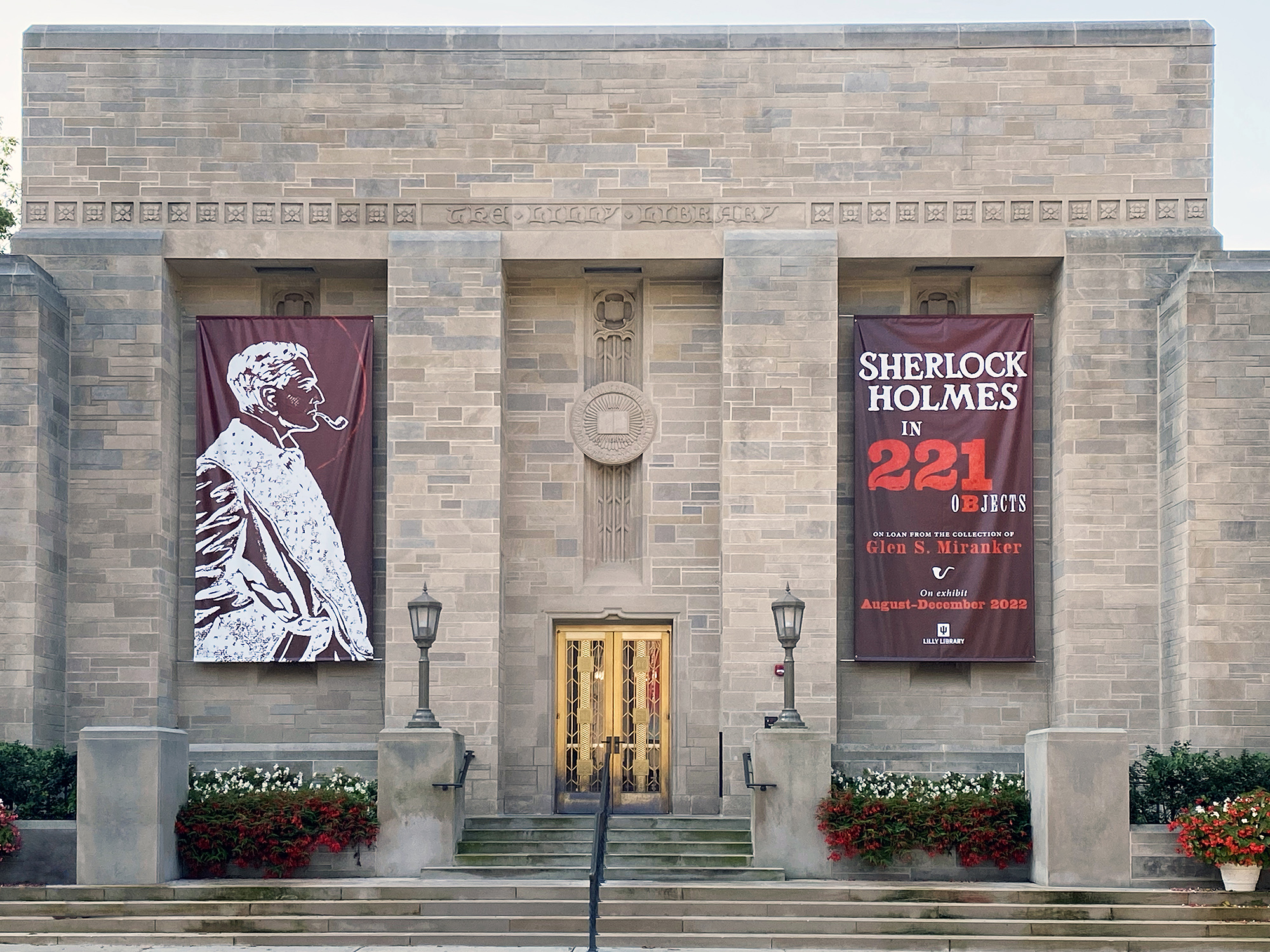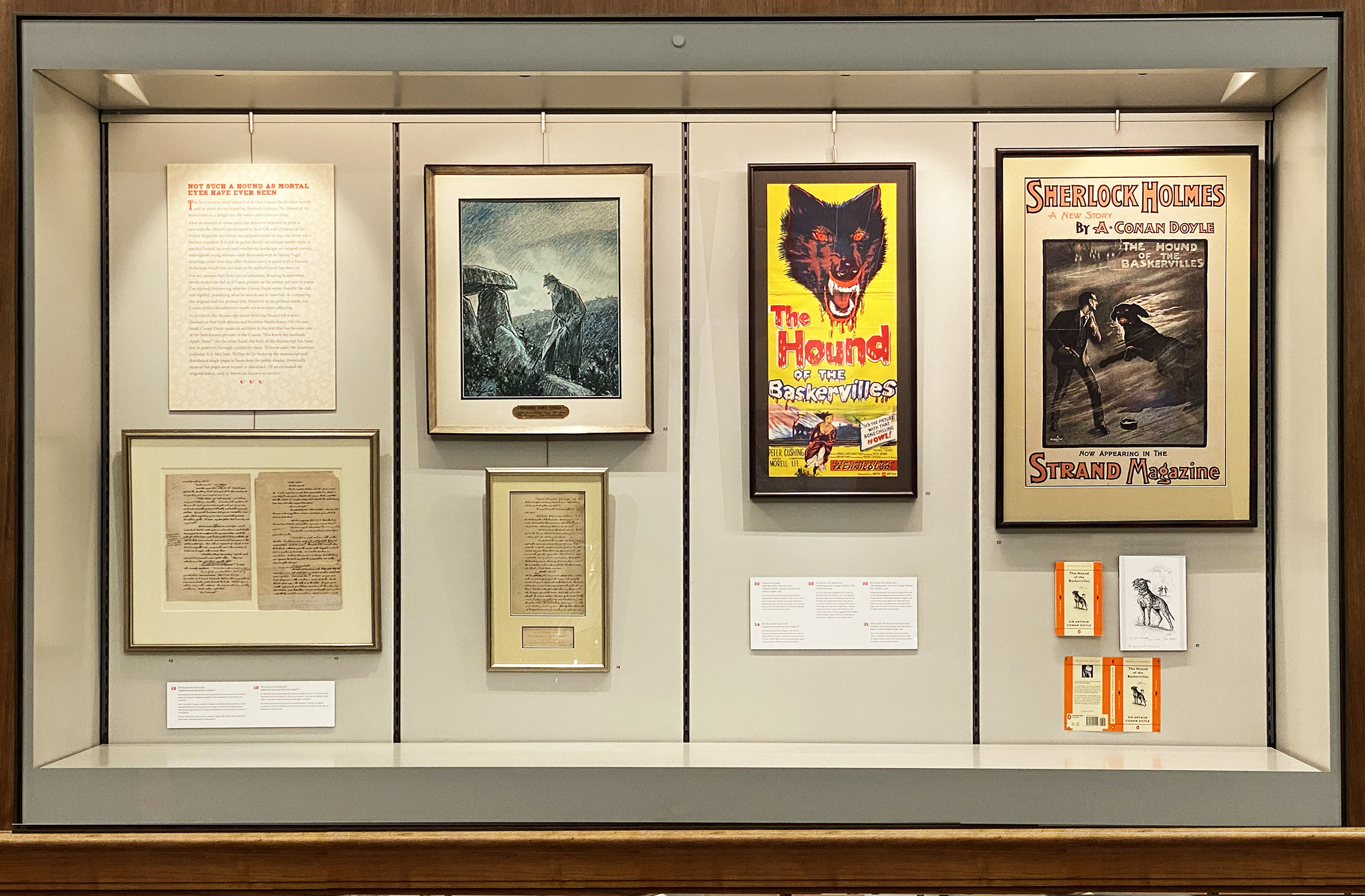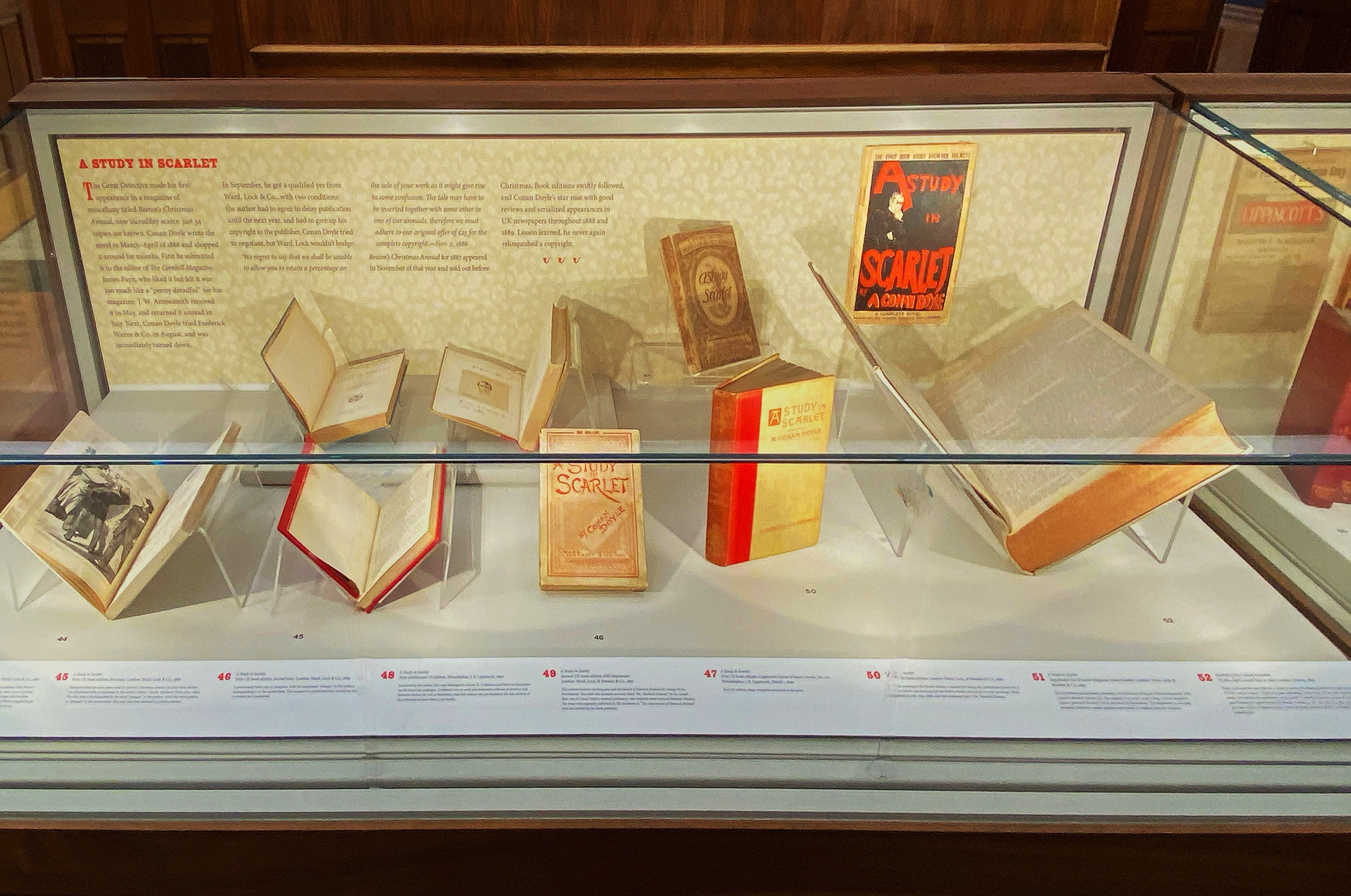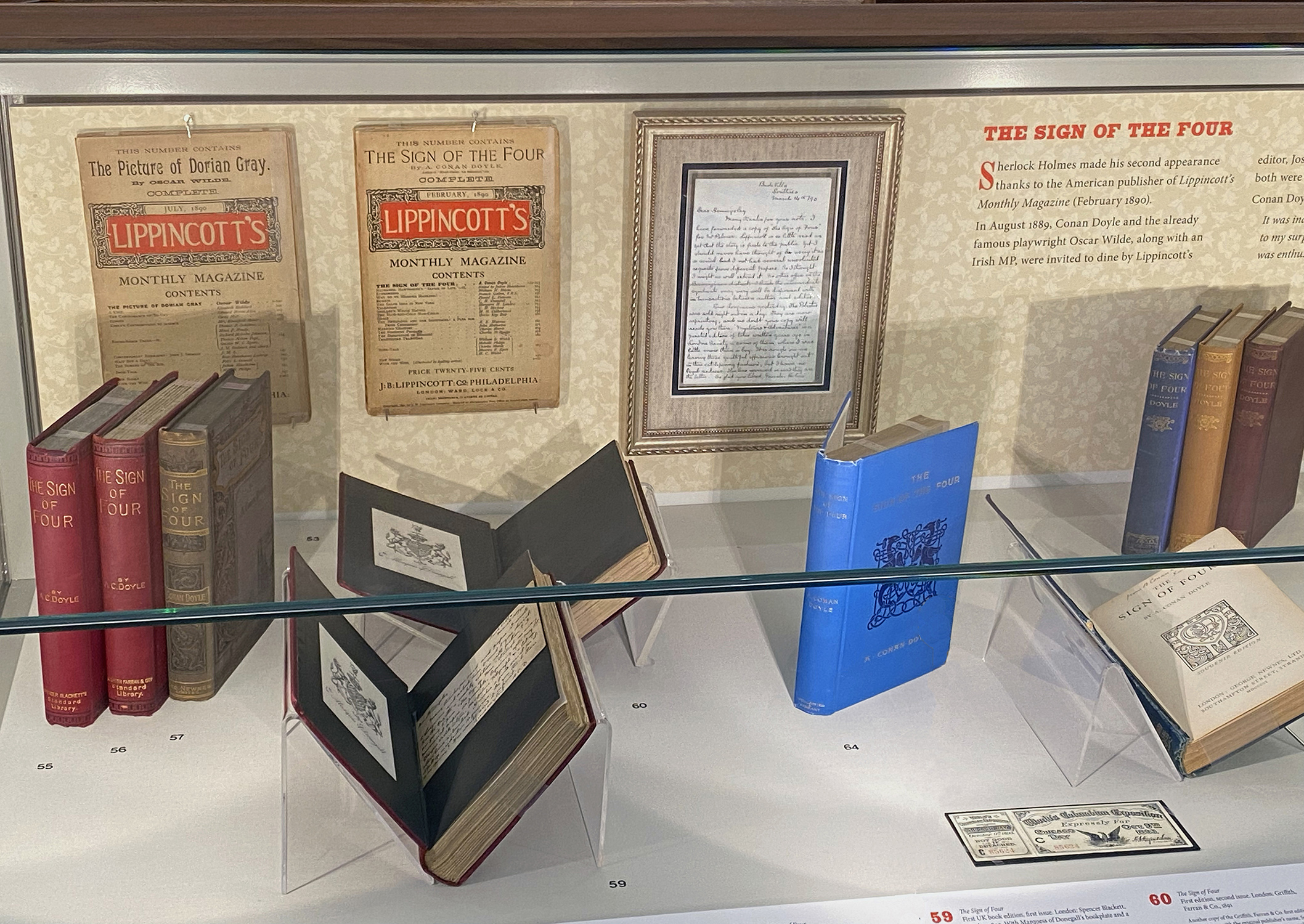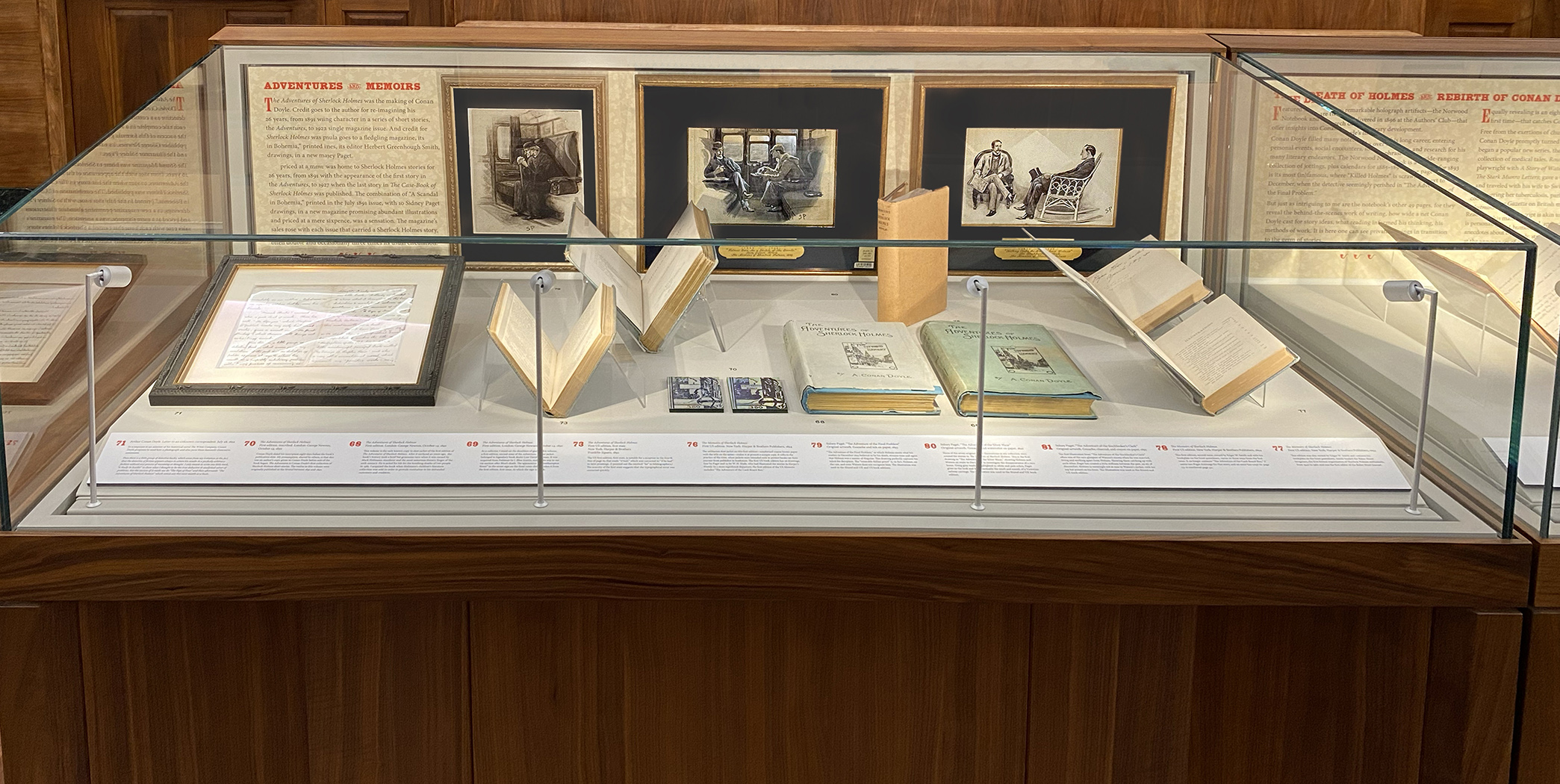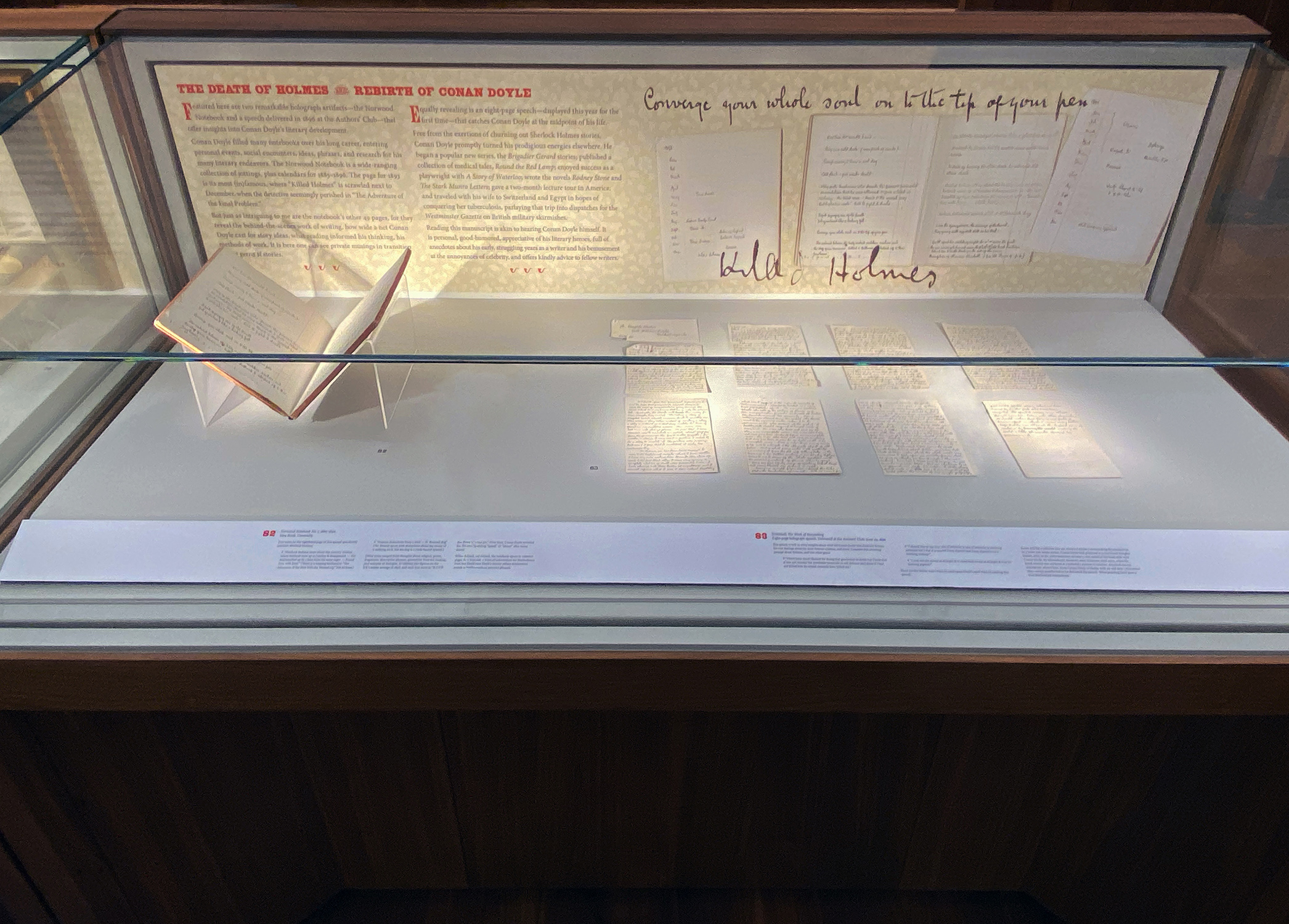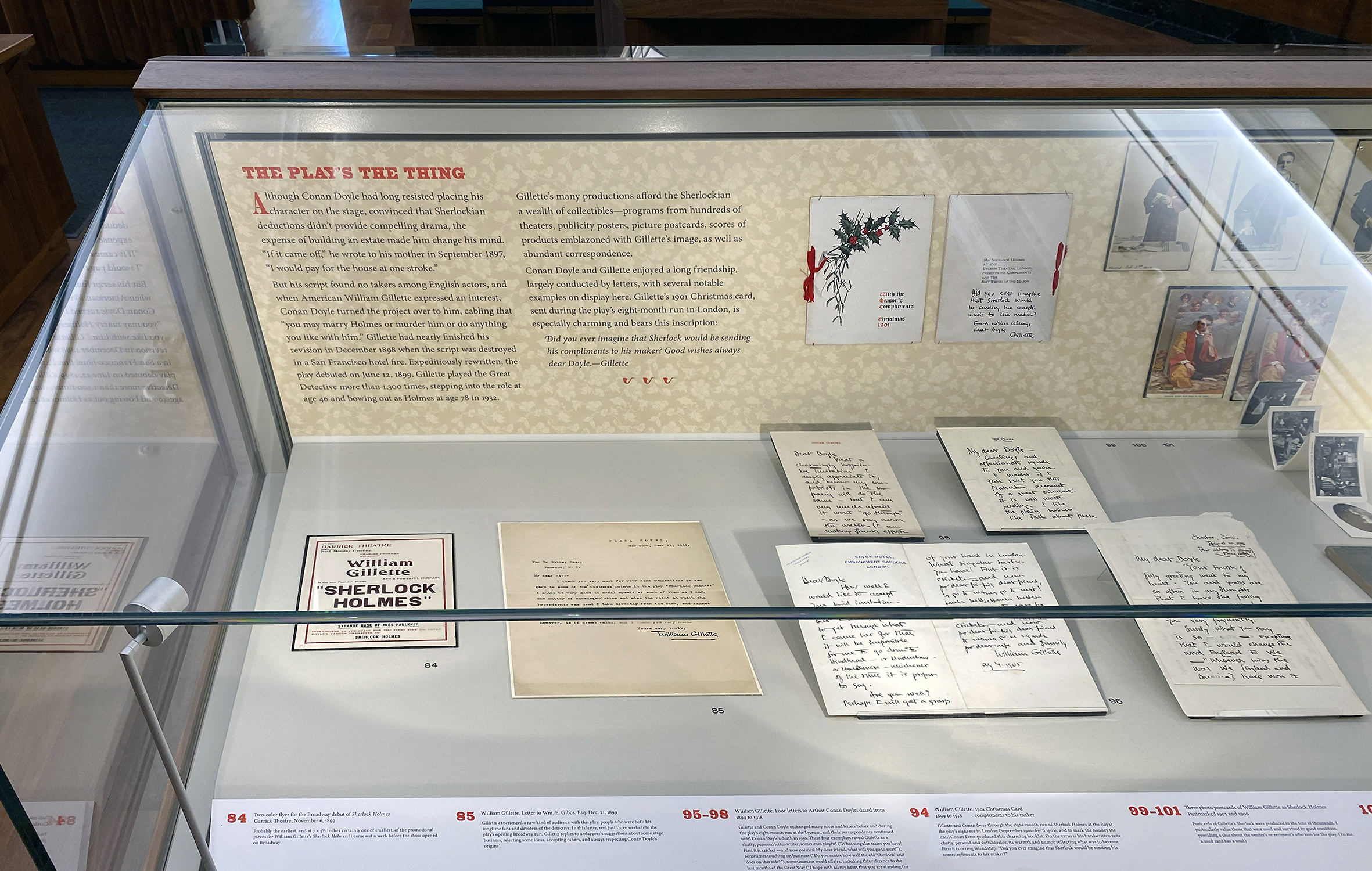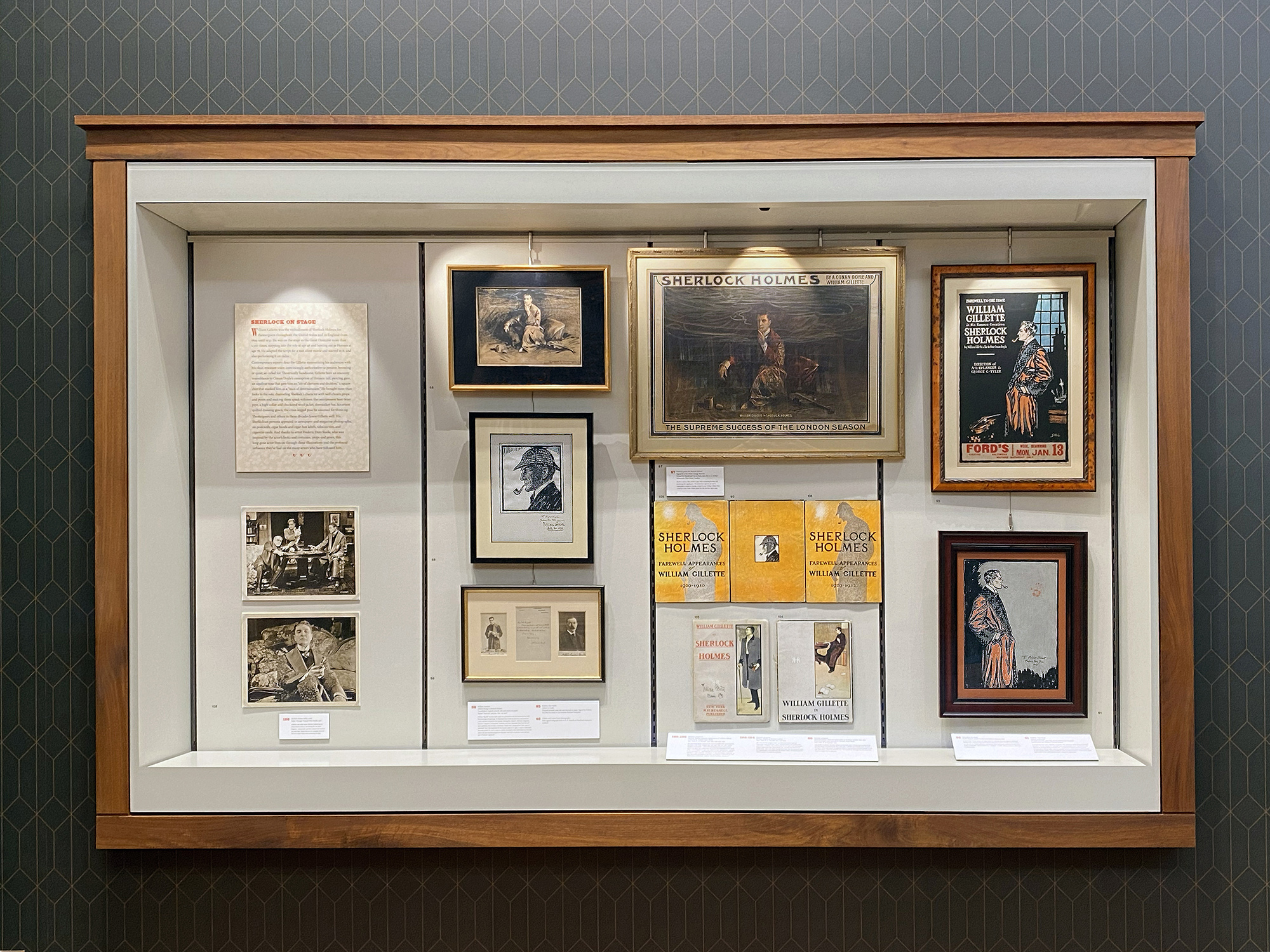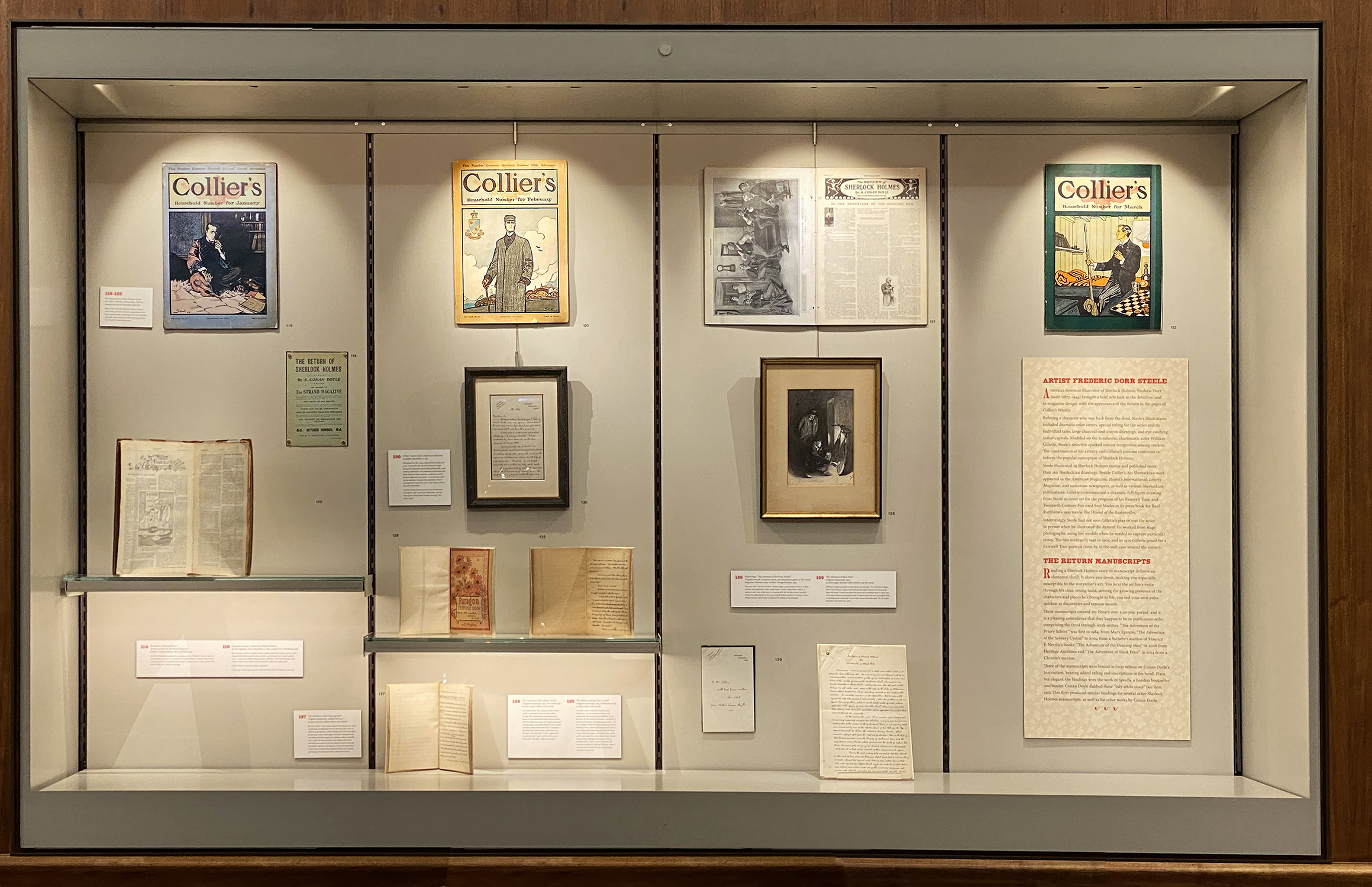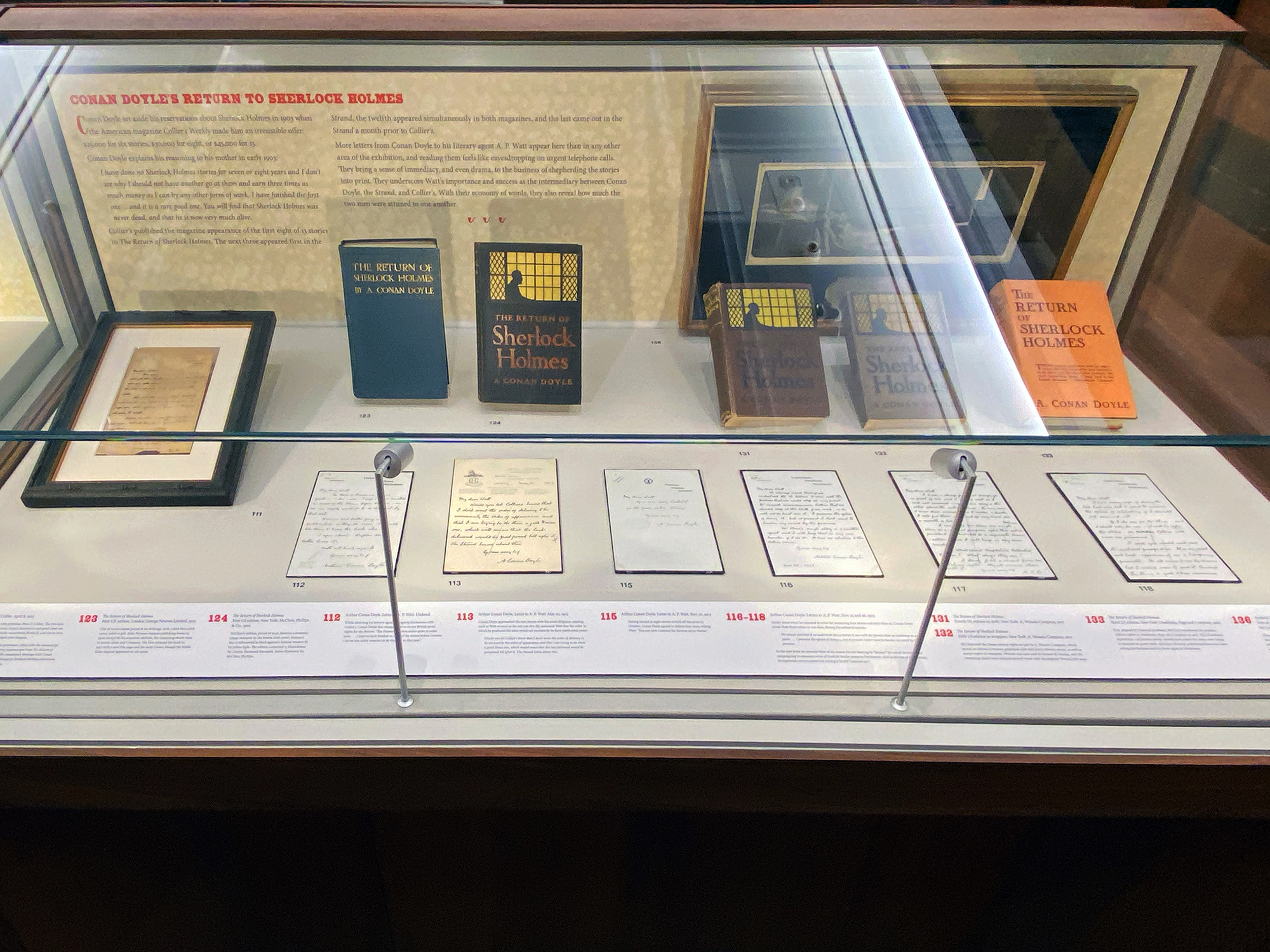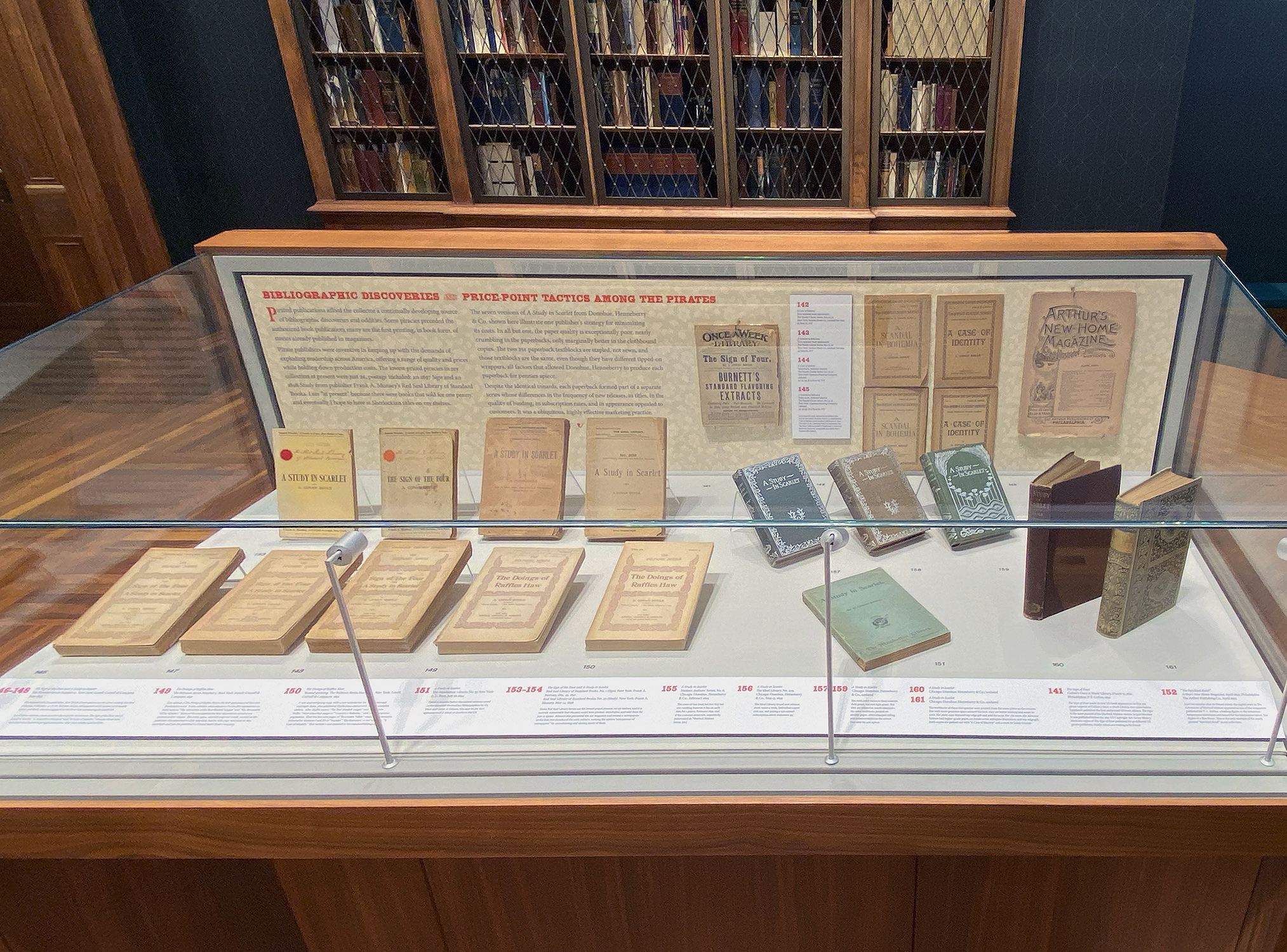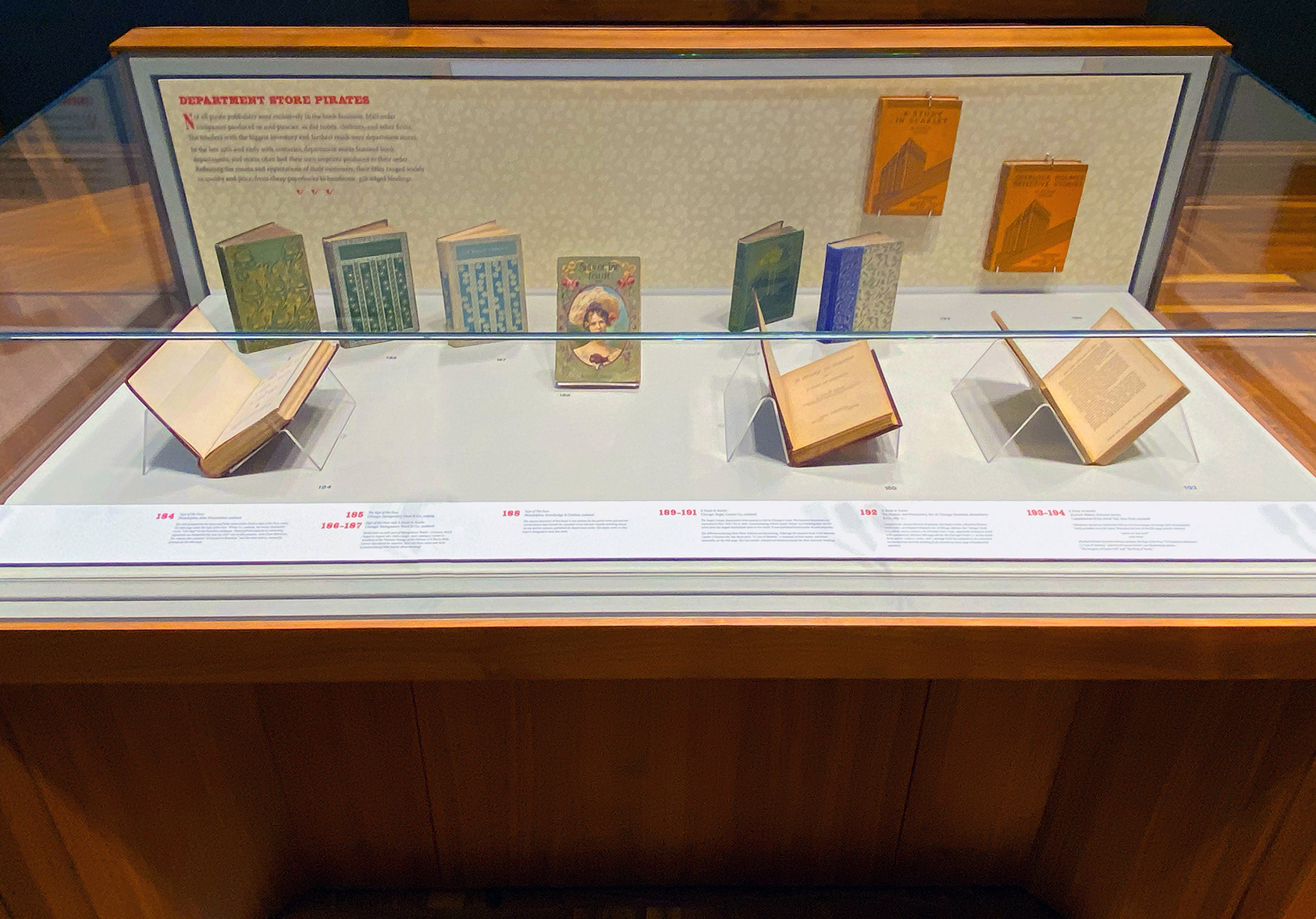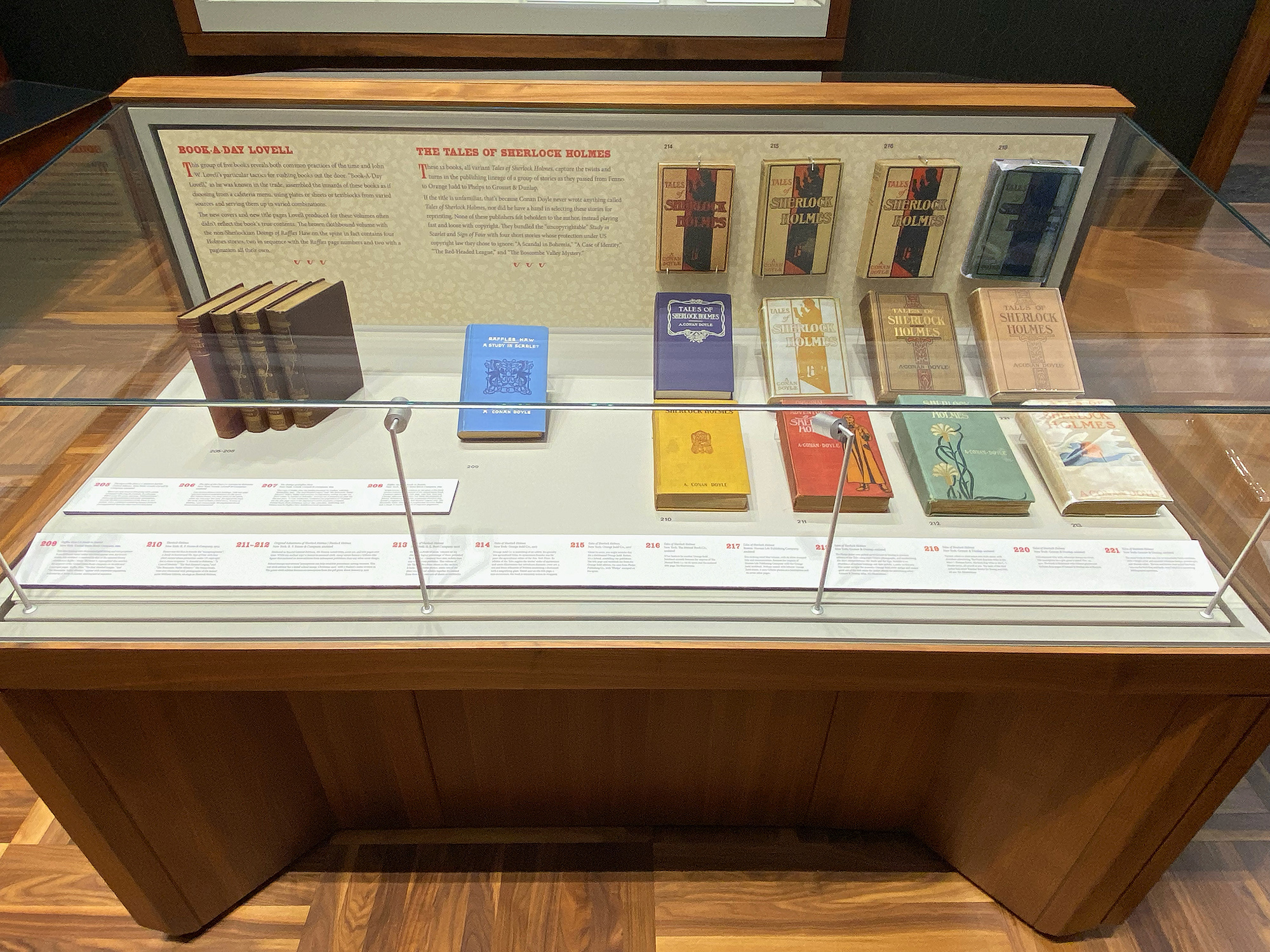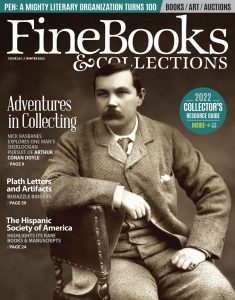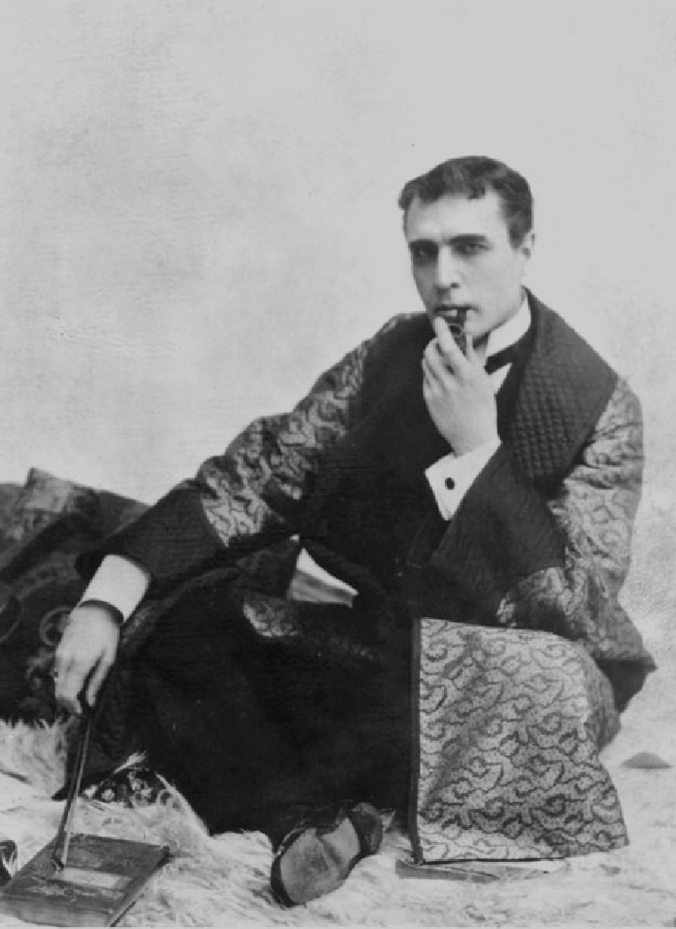
Sherlock Holmes in 221 Objects draws upon the preeminent collection assembled by Glen S. Miranker, rich in bibliographic rarities, manuscripts, books, correspondence, and artwork, all with fascinating stories to tell beyond their significance as literary and cultural landm arks. Named for the address of the detective's Baker Street lodgings, the exhibition presents items that will intrigue bibliophiles, Sherlockians, and general audiences.
Highlights include leaves from The Hound of the Baskervilles; four short story manuscripts; original artwork by the British and American illustrators who created Sherlock's iconic look for readers; a wealth of holograph letters from Arthur Conan Doyle to friends, colleagues, and well-wishers; a fascinating cache of pirated editions; the only known salesman's dummy for the US Hound; an “idea book” of Conan Doyle's private musings in which he (in)famously penned “Killed Holmes” on his calendar for December 1893; and a handwritten speech—never before displayed—with the author's explanation for killing Holmes:
"I have been much blamed for doing that gentleman to death but I hold that it was not murder but justifiable homicide in self defence [sic] since if I had not killed him he would certainly have killed me."

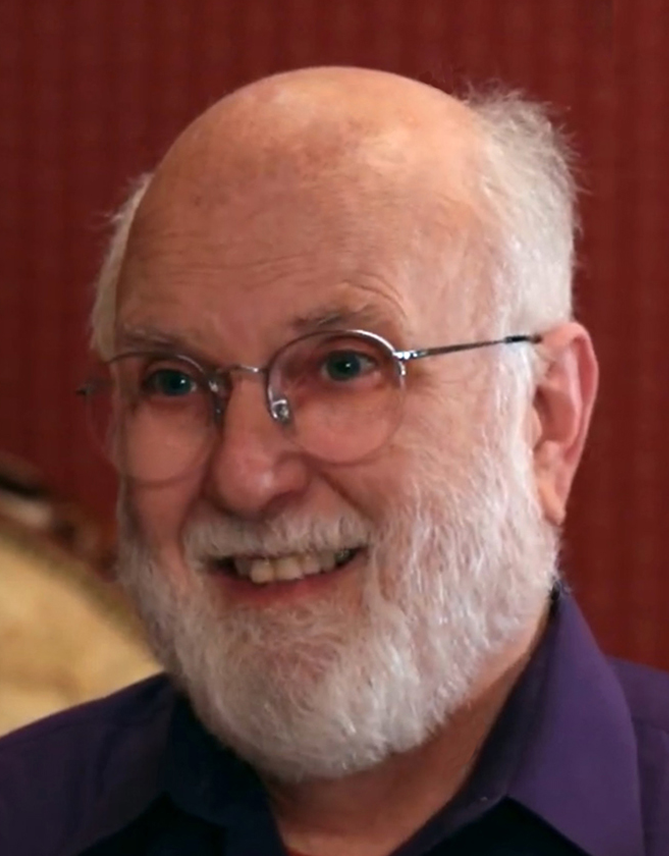
After moving to California in 1981 and founding several start-up companies, Glen was invited by Steve Jobs to join Next Computer in 1990 and Apple Computer in 1996. For most of his tenure at Apple, he ran hardware development and served as Apple's Chief Technology Officer (Hardware), retiring in 2004.
Glen has loaned books, artwork, and holograph materials from his collection to many exhibitions, including the 2019 exhibition The History of the BSI Through 221 Objects at Indiana University's Lilly Library; the 2014 exhibition Sherlock Holmes, the Man Who Never Lived and Will Never Die at the Museum of London; and the 2009 exhibition Ever Westward: Sir Arthur Conan Doyle in American Culture at Harvard's Houghton Library. He has also mounted two solo shows: the 2010 exhibition Sidney Paget's Sherlock Holmes: A Sesquicentennial Exhibition at the Arion Press Gallery, and You Know My Methods: A Collector's Approach to the Sherlockian Canon, a 2012 exhibition at the Book Club of California.
Glen serves as a board member at the Rare Book School (where he is also a perennial student and a fundraiser) and the San Francisco Silent Film Festival (where he helped with the restoration of William Gillette's long-lost 1916 Sherlock Holmes movie). He is a founder and past board member of the Baker Street Irregulars Trust and a past board member of the American Foundation for Toronto Public Library, the Russell/Engleman Rheumatology Research Center at the University of California San Francisco, and the National Cryptological Museum.

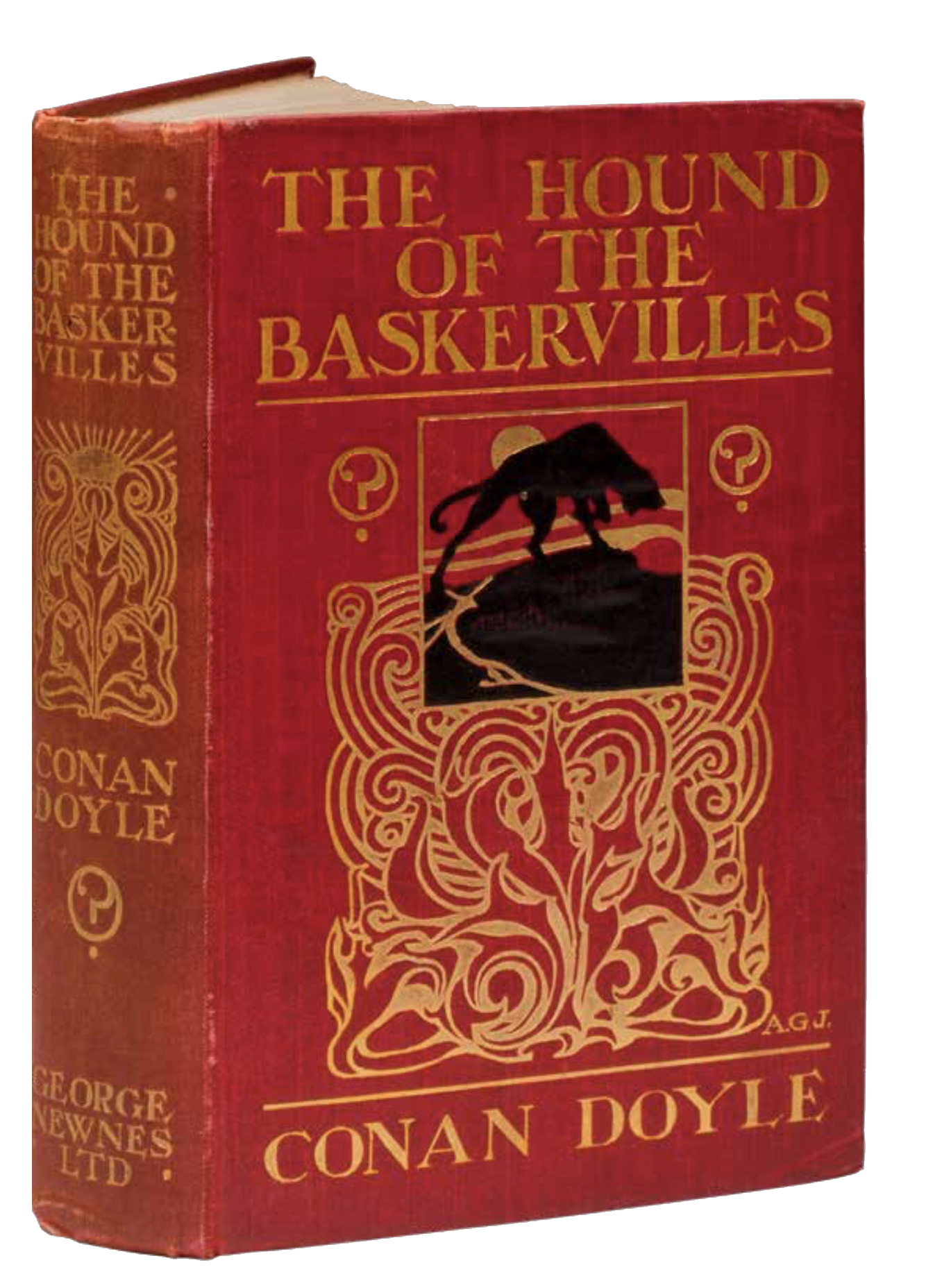
Visitors to the exhibition will readily see evidence of Glen's favorite collecting strategy: assembling “clumps.” “I like to assemble objects that tell a richer story as a group than they can individually,” he explains. “They offer more insight together, imparting a more complete understanding than one object can do singly.” Some examples:
By itself, the Newnes Sixpenny edition of the Hound is a striking book, but its impact is more complete when one reads Conan Doyle's note agreeing to its publication and also sees the original artwork for its cover. It's a clump that provides a richer view of a moment in the life of the author and in the ongoing publication history of the Hound.
During the three decades that William Gillette performed in the play Sherlock Holmes, his phenomenal publicity machine cranked out all manner of souvenirs, posters, and programs—all represented in Glen's collection. But for a human side to the business of show business, Glen prizes Gillette's correspondence with Conan Doyle, including a 1901 Christmas card with this note: “Did you ever imagine that Sherlock would be sending his compliments to his maker?
Glen's collection is also known for its singular objects and items with odd backstories, which he pursues relentlessly, for revelations that go beyond two-dimensional text on the page:
As a bibliographic oddity, the copy of The Sign of the Four owned by Chicago businessman H. N. Higinbotham can't be topped. It's a piracy, a publishing practice that enraged many authors, Conan Doyle included. Yet Conan Doyle inscribed this book to Higinbotham, who also signed it and tucked in a ticket stub from the 1893 World's Columbian Exposition, which he helped organize.
For another backstory, consider the only known copy in dust jacket of the first UK edition of The Adventures of Sherlock Holmes. It was uncertain whether it had been published in a dust jacket until a copy surfaced in 1981. Among its owners, in the 20 years before Glen acquired it, was a man who was not only the most notorious literary forger of the 20th century but also a murderer.
The Sherlockian Canon is small—just 56 short stories and four novels—but the opportunities and challenges for a gently mad collector are vast, often daunting, always irresistible. To Glen, the game is perennially afoot.

